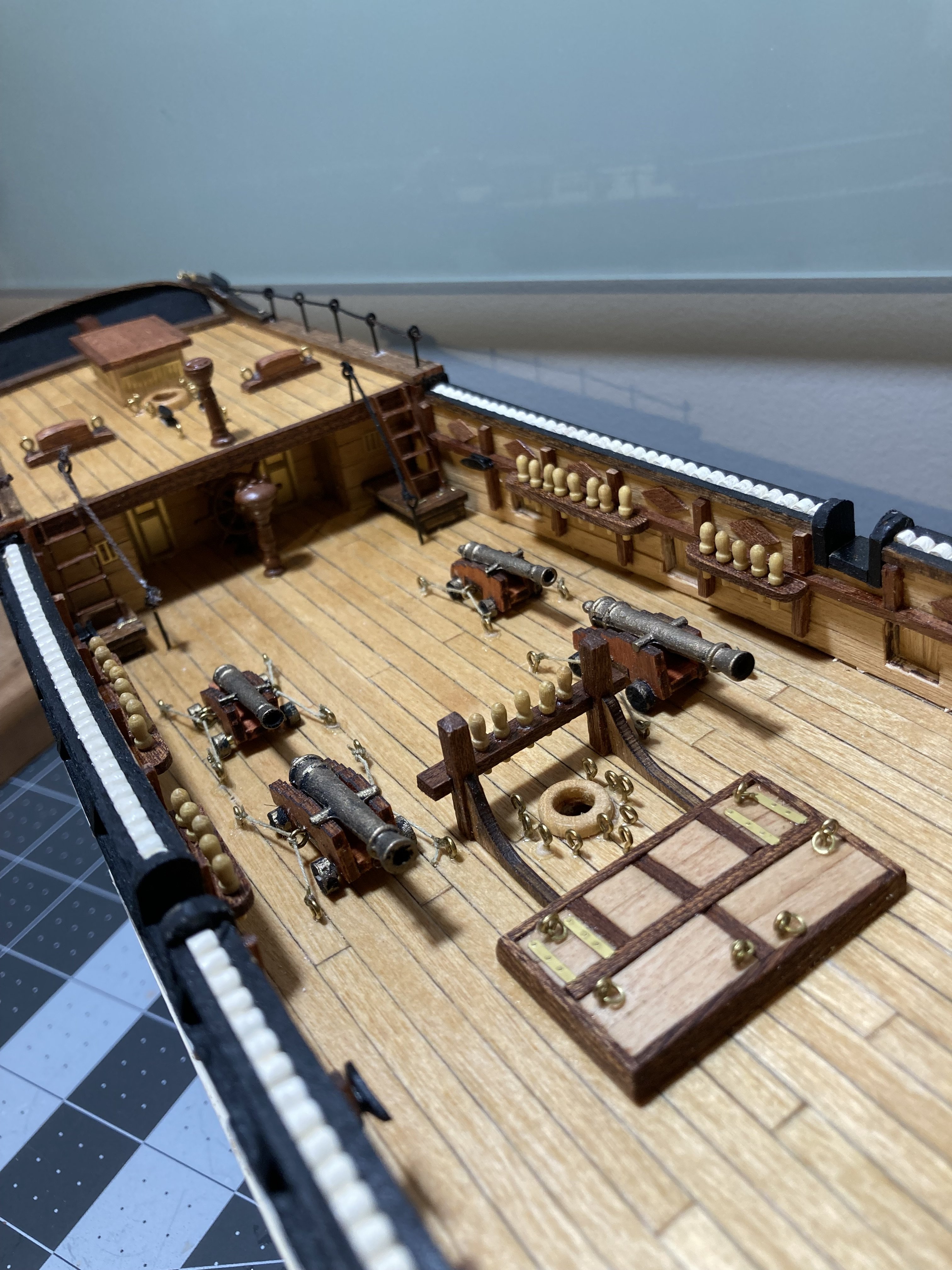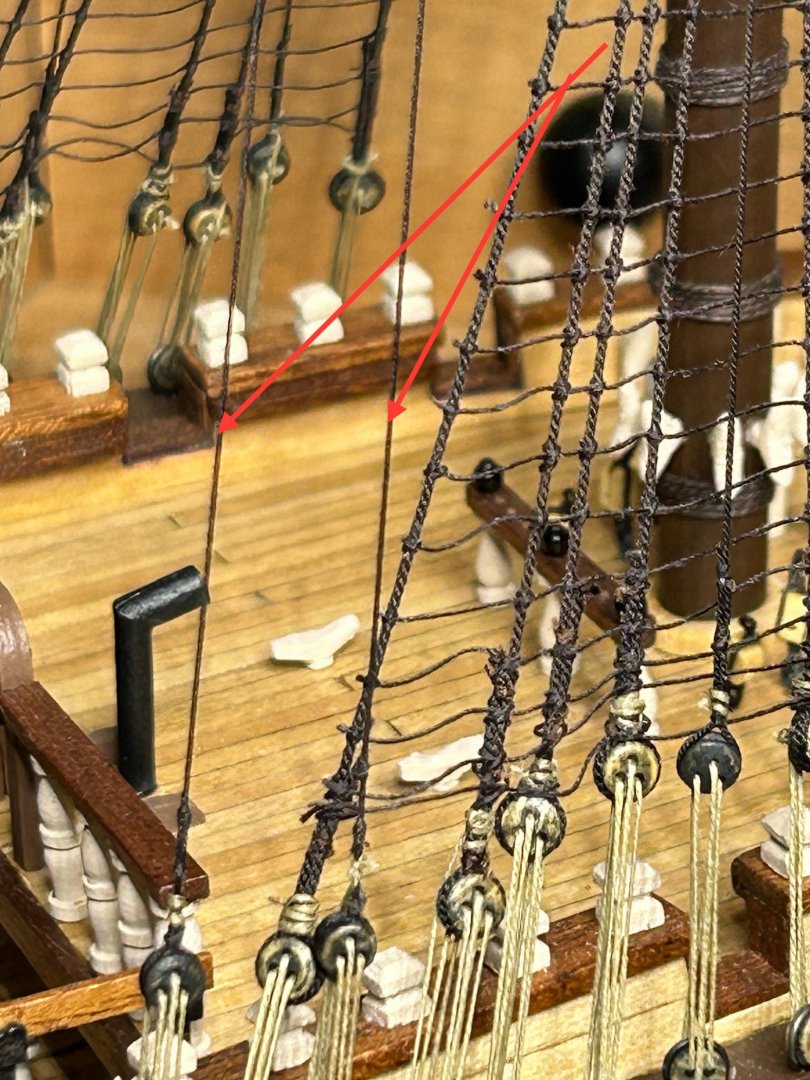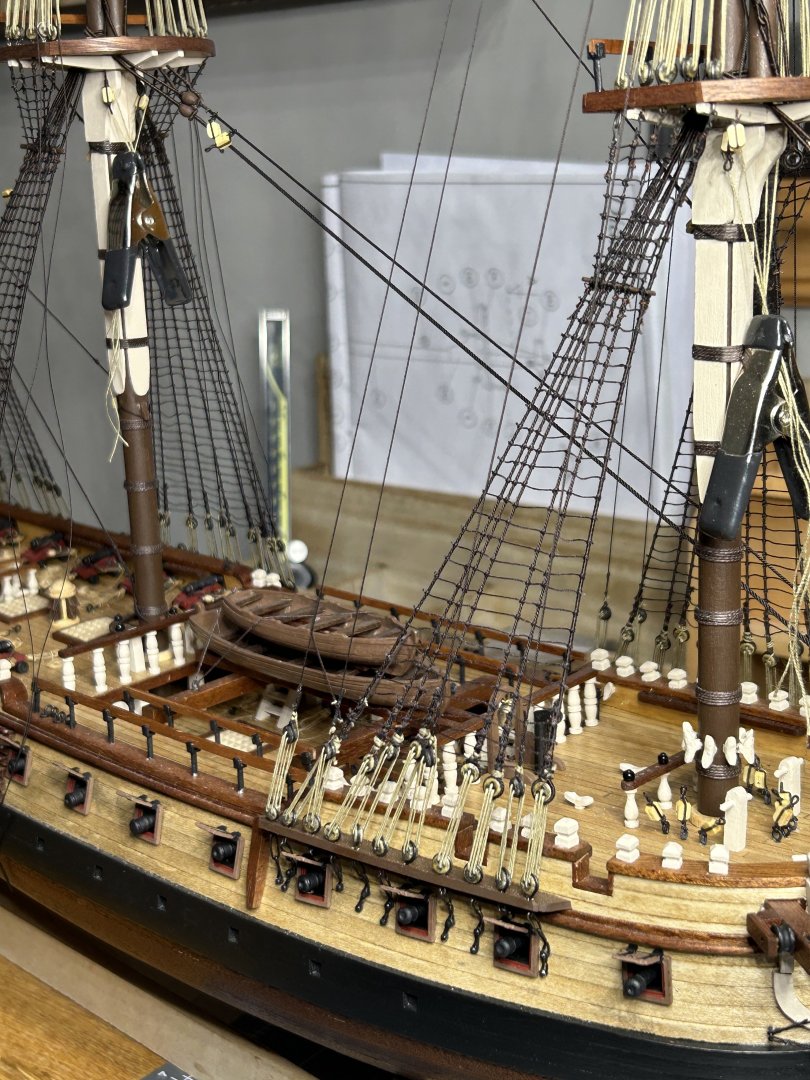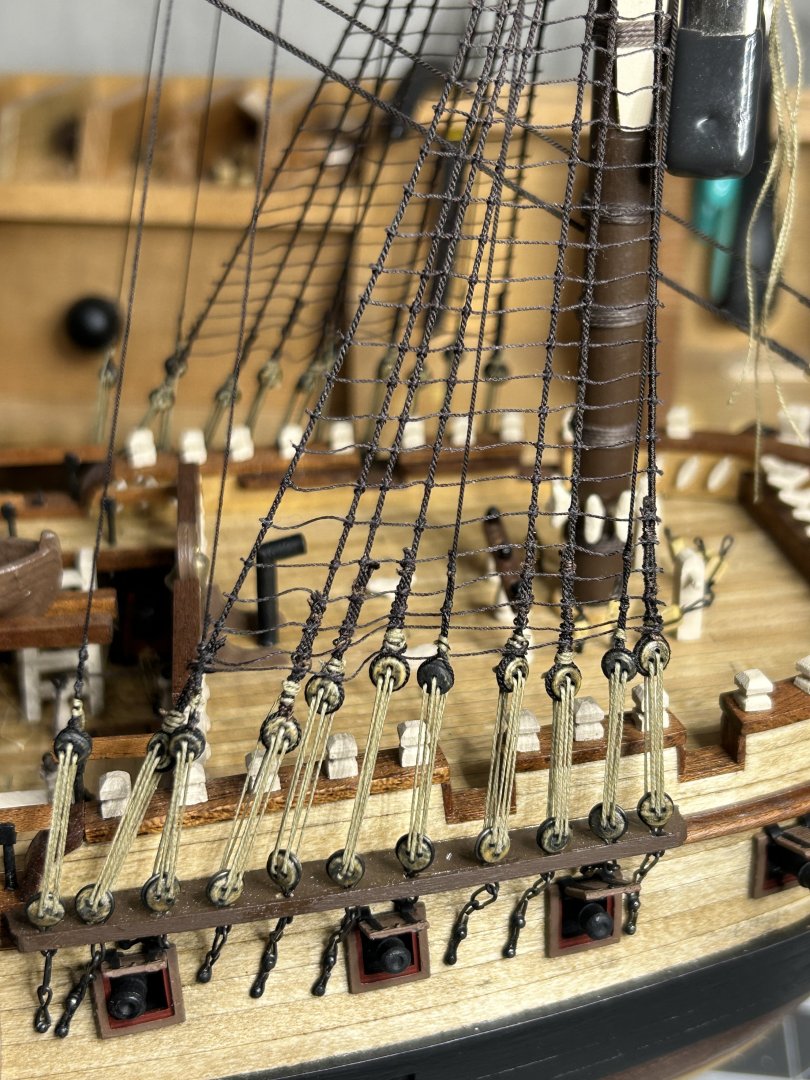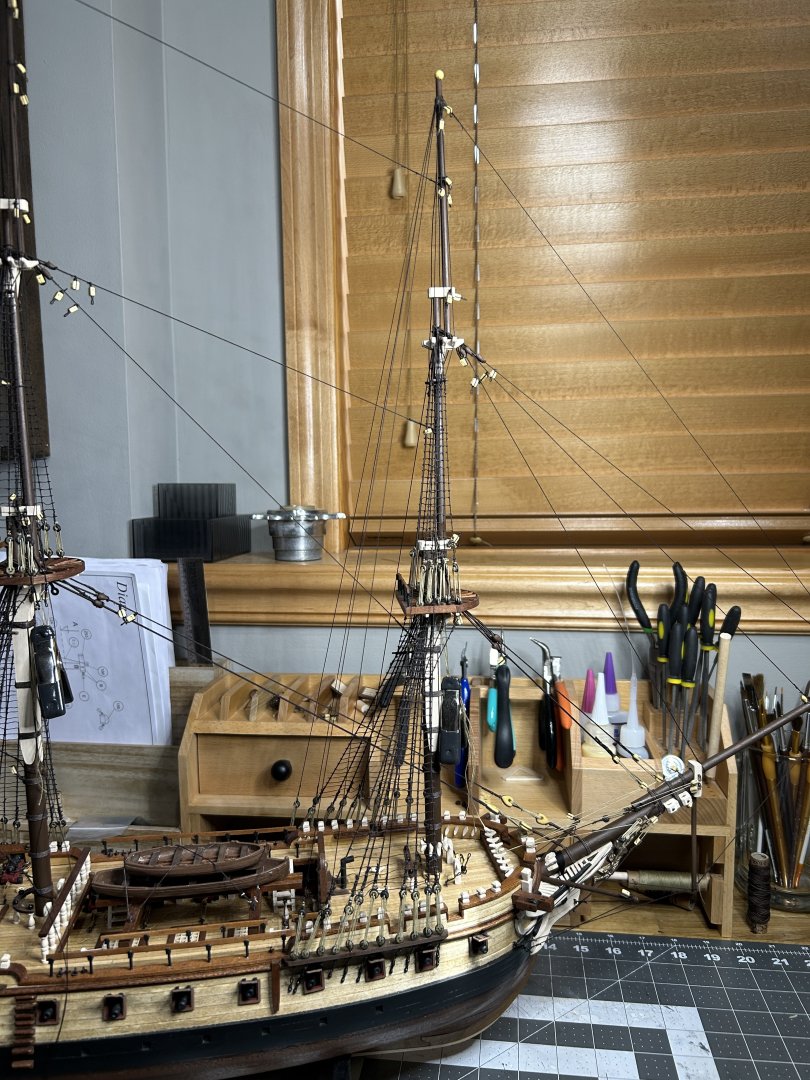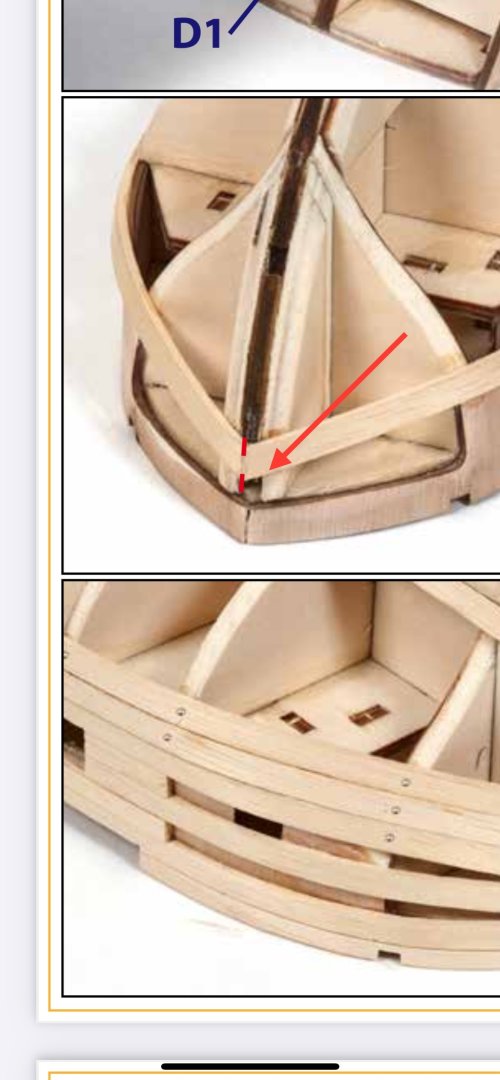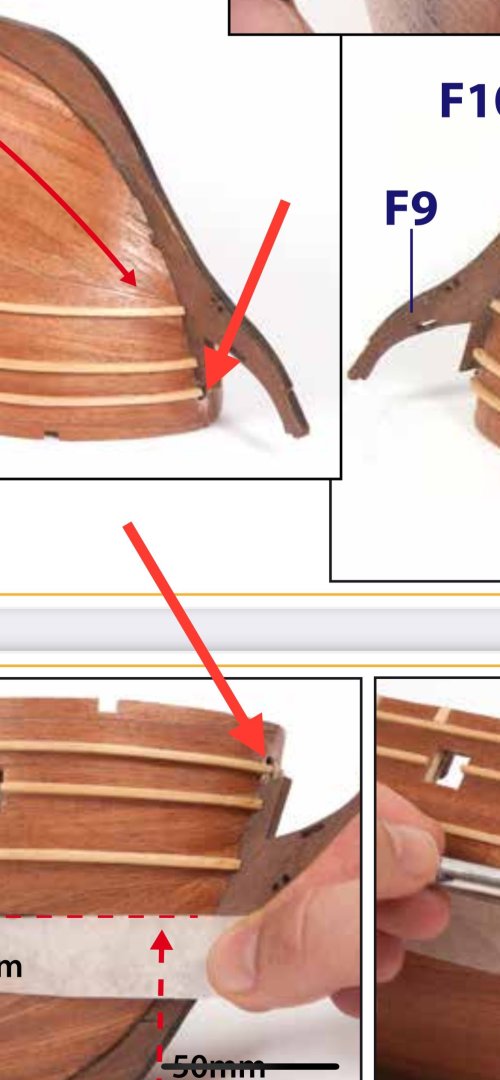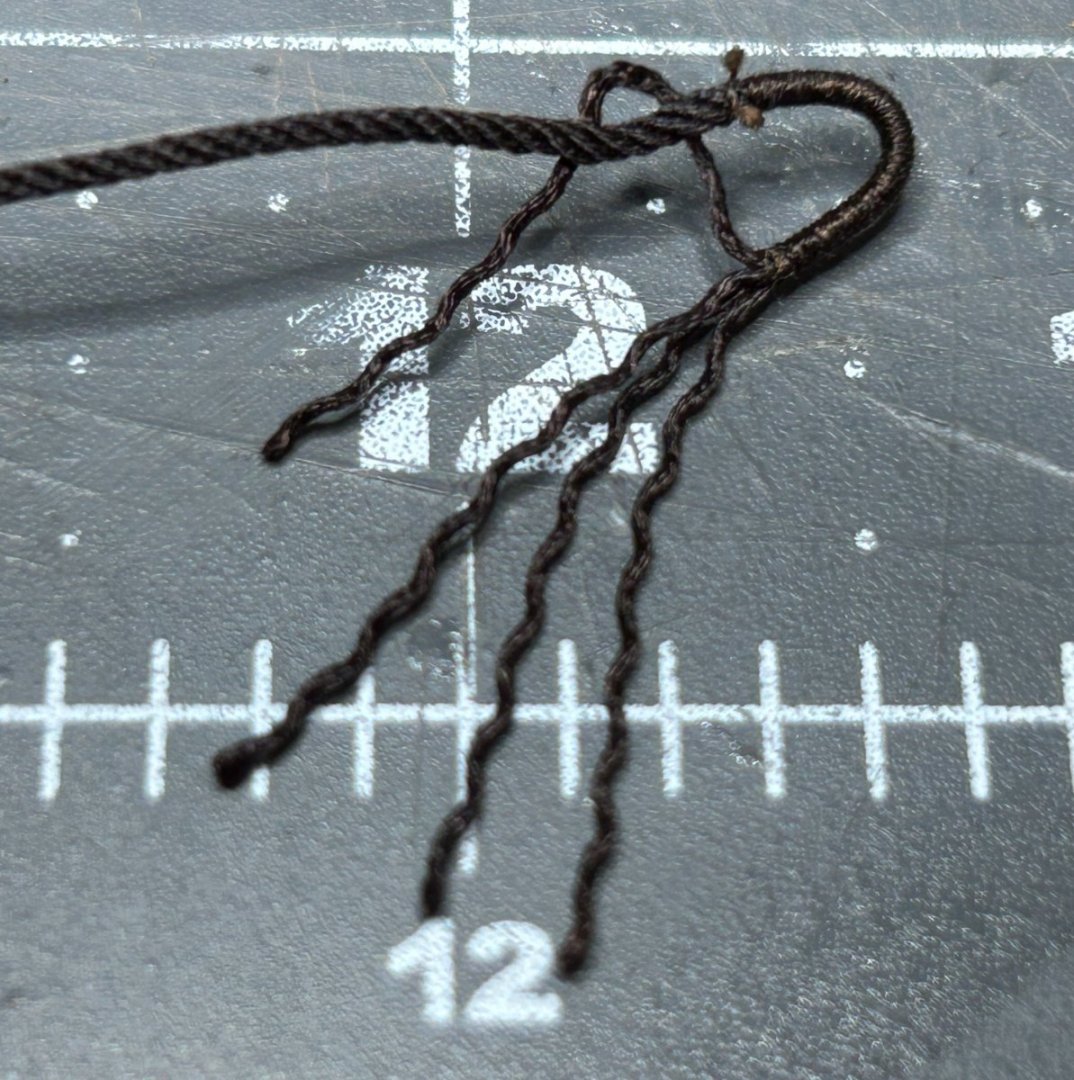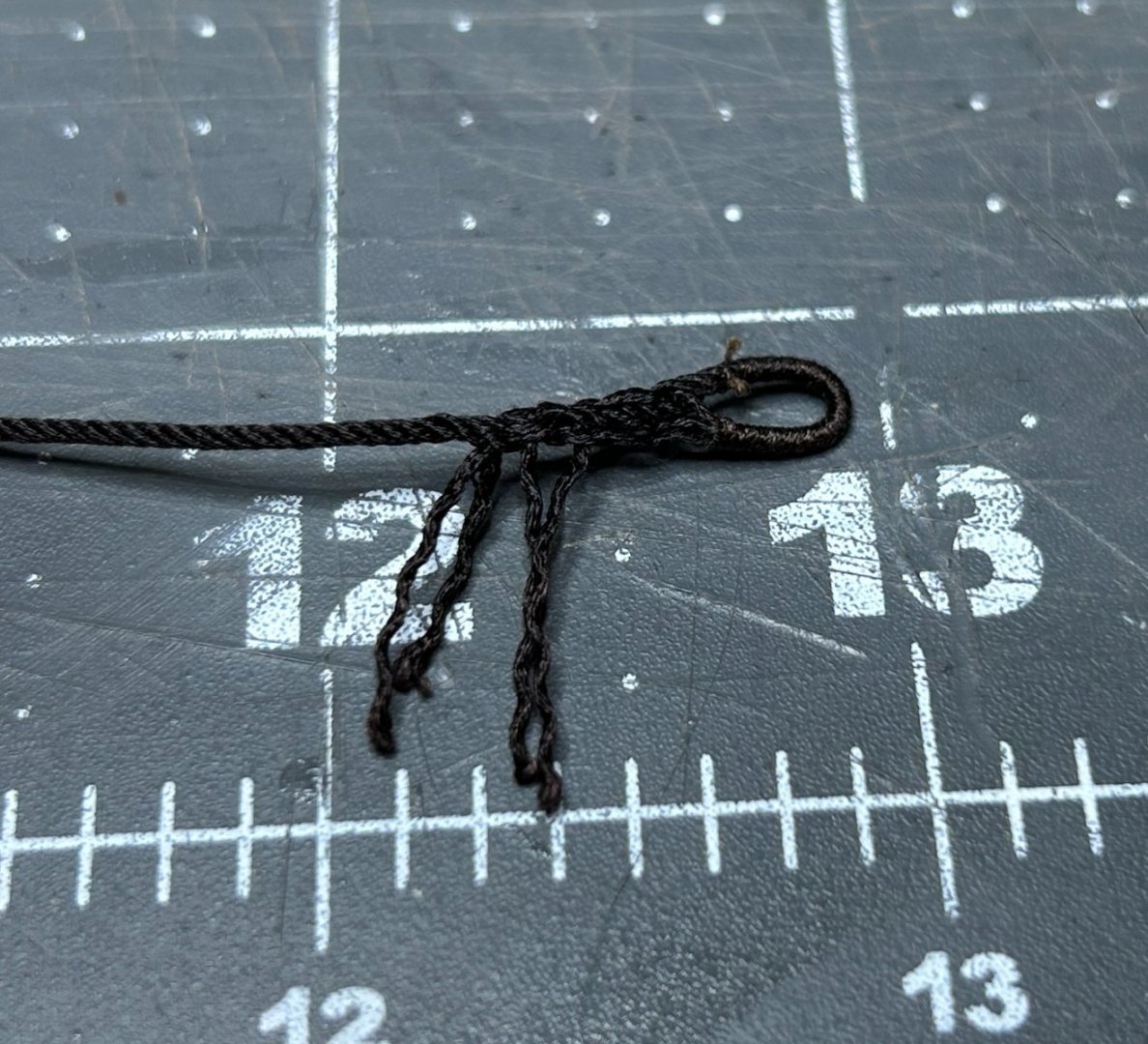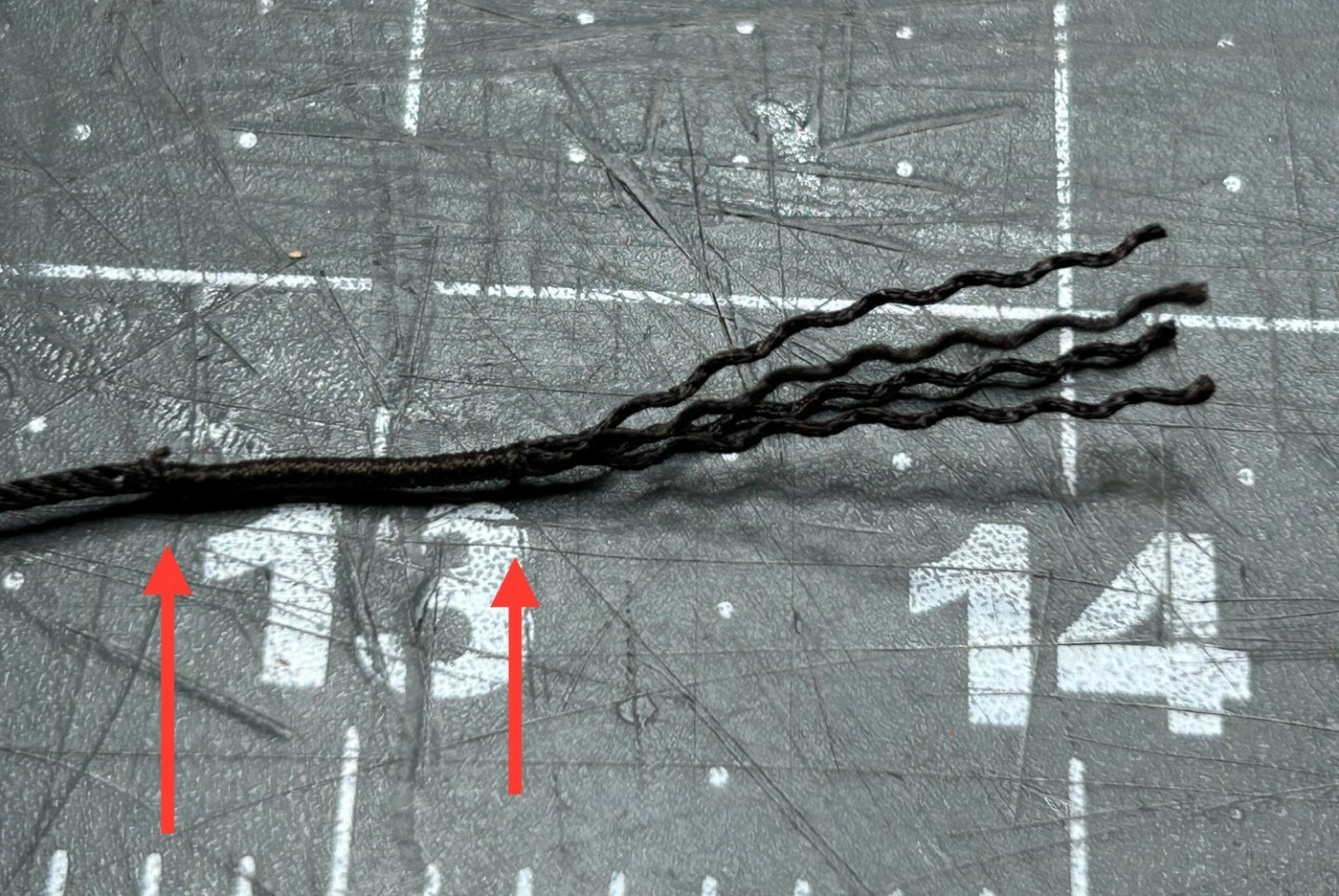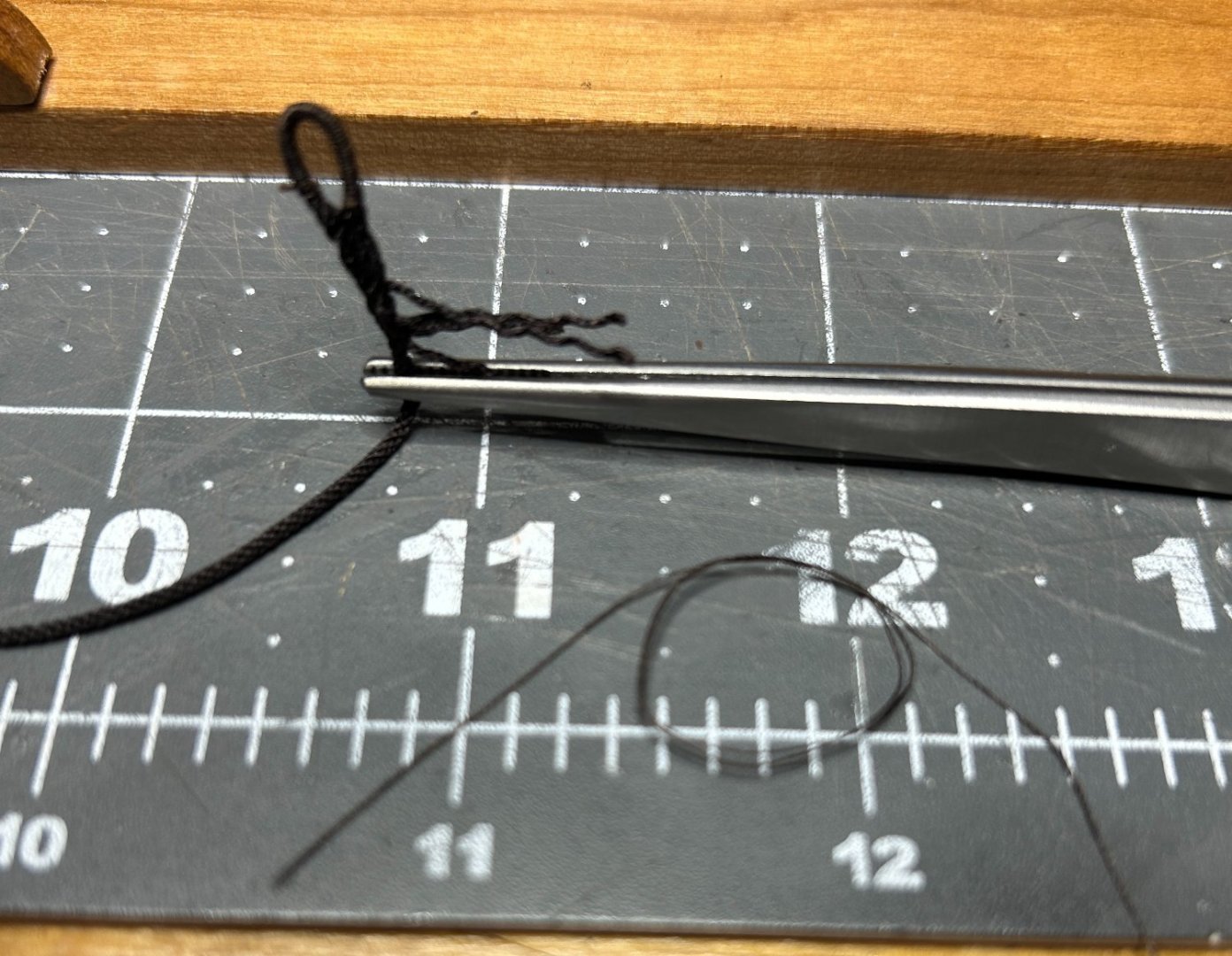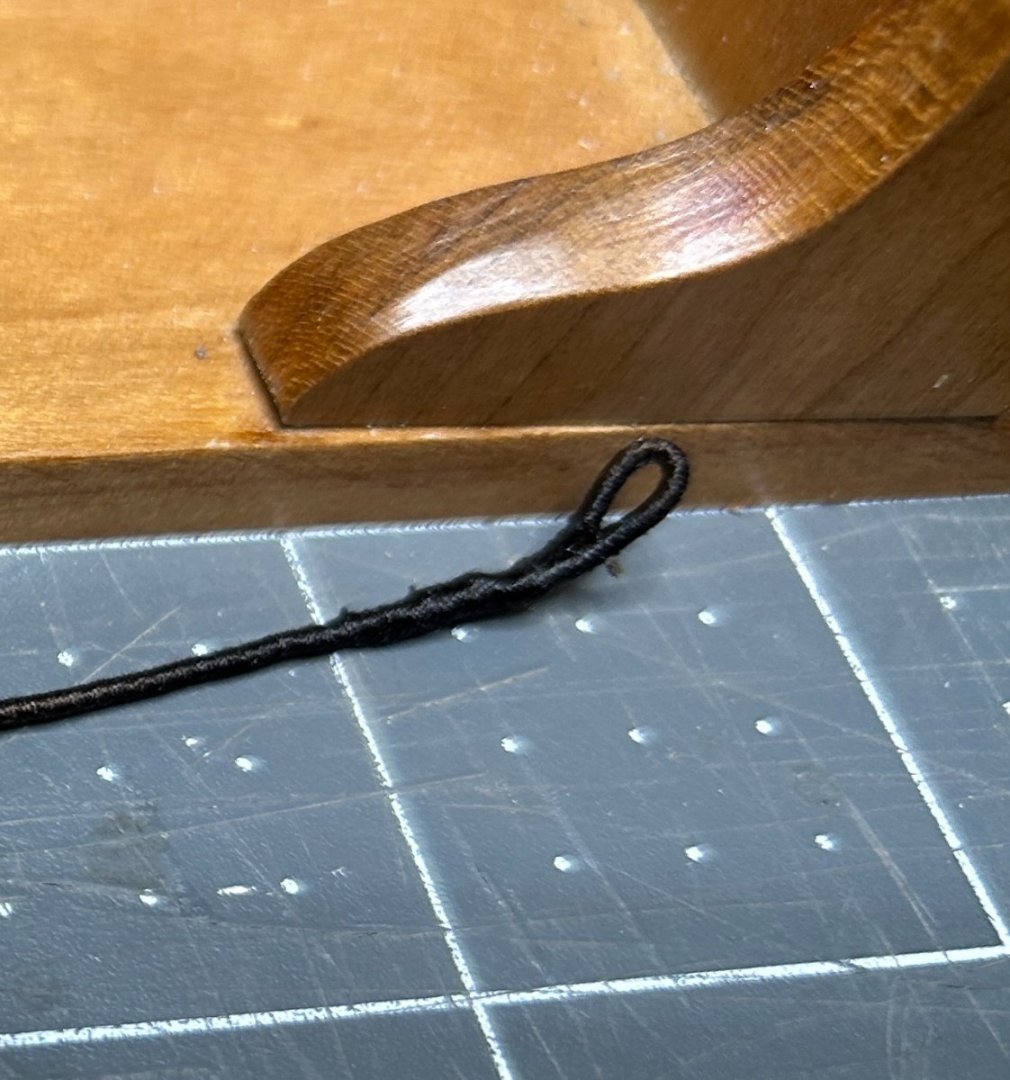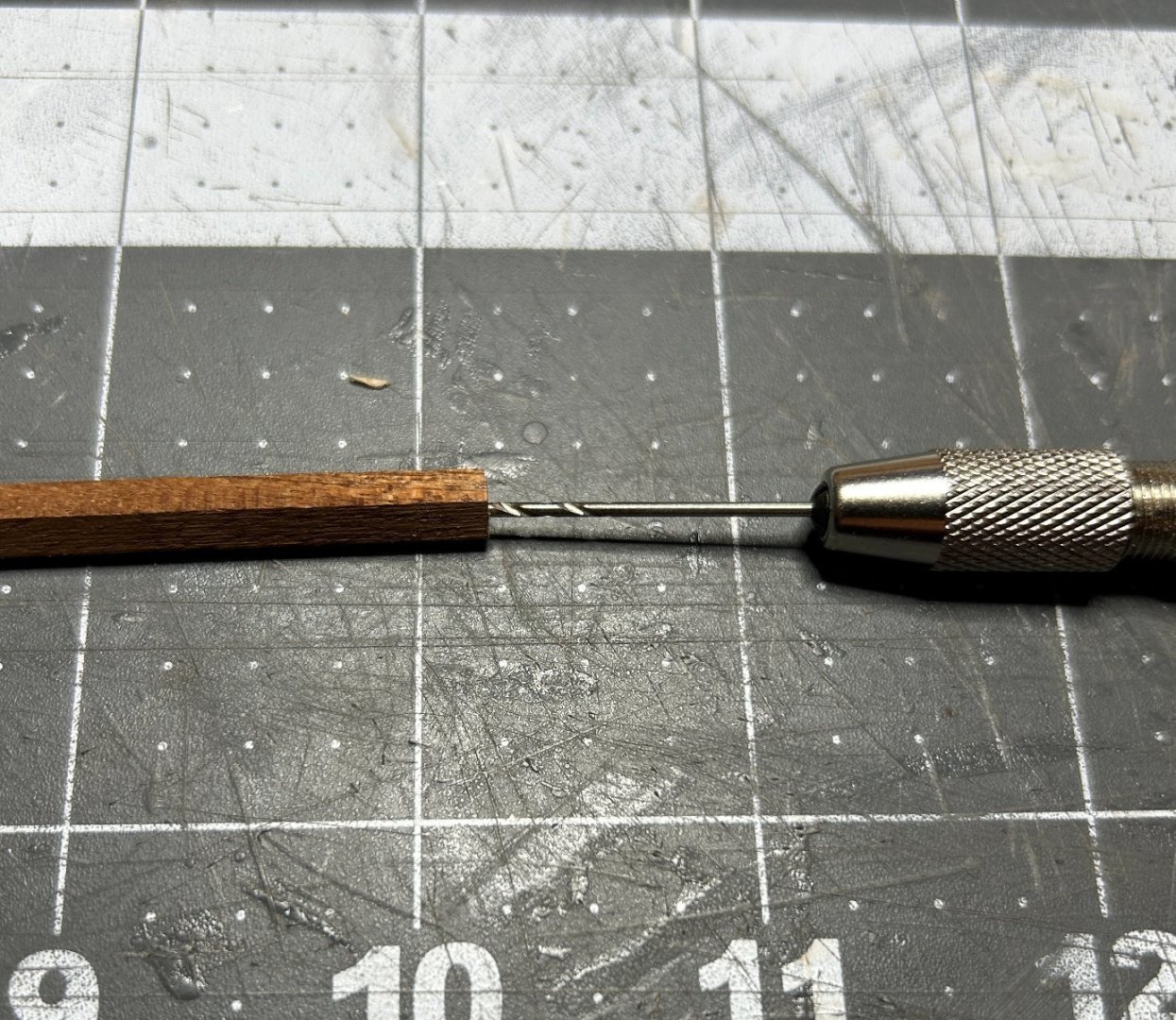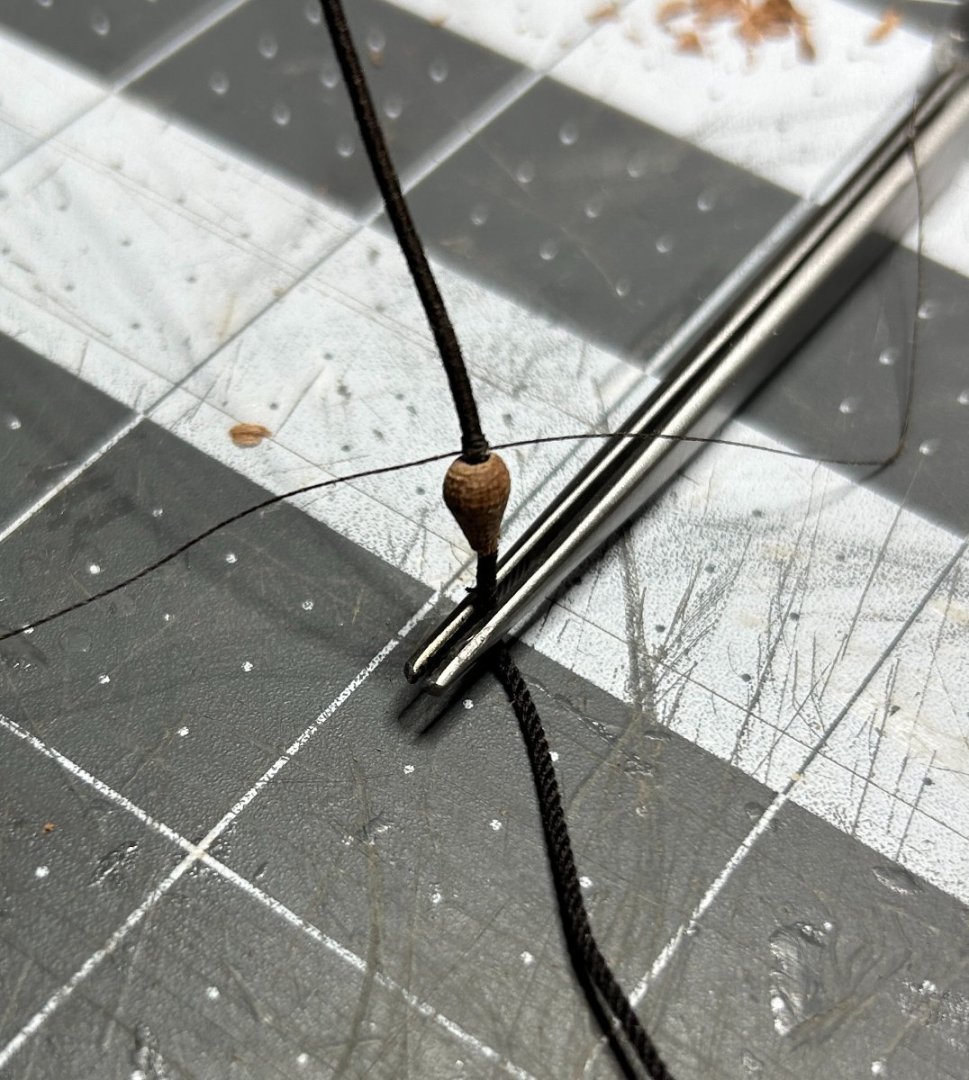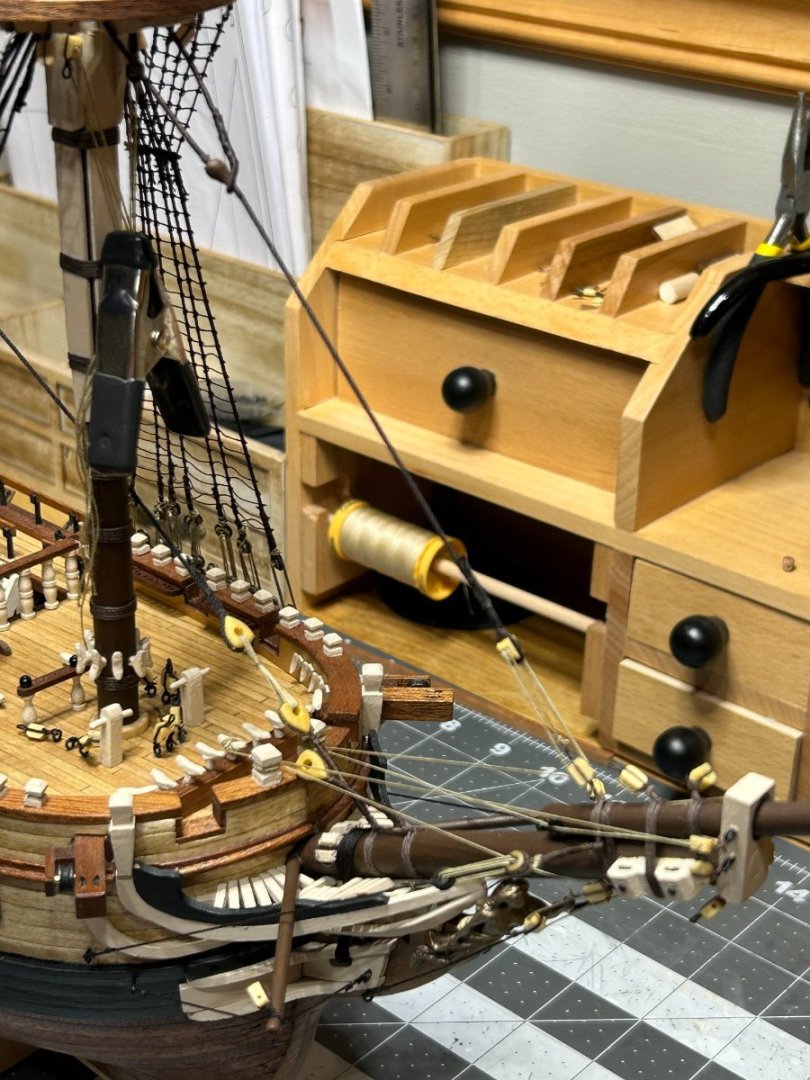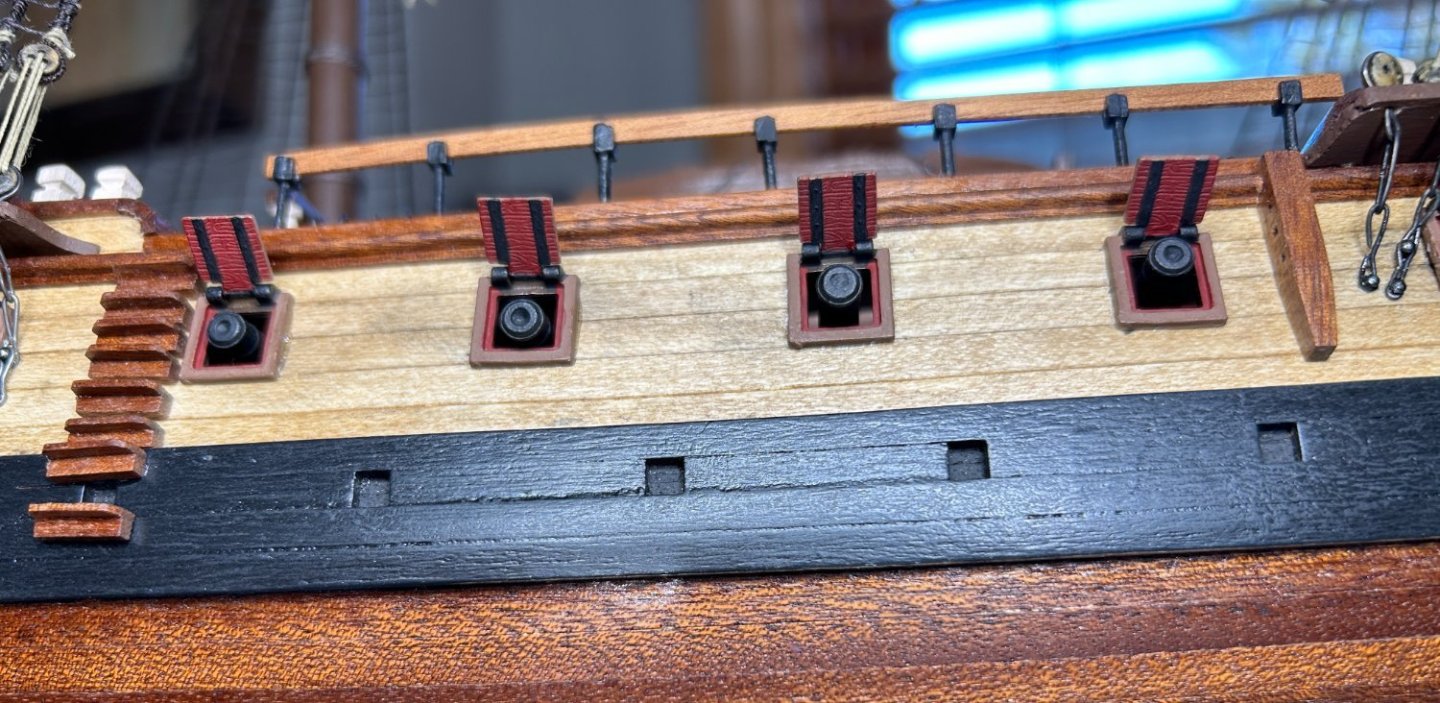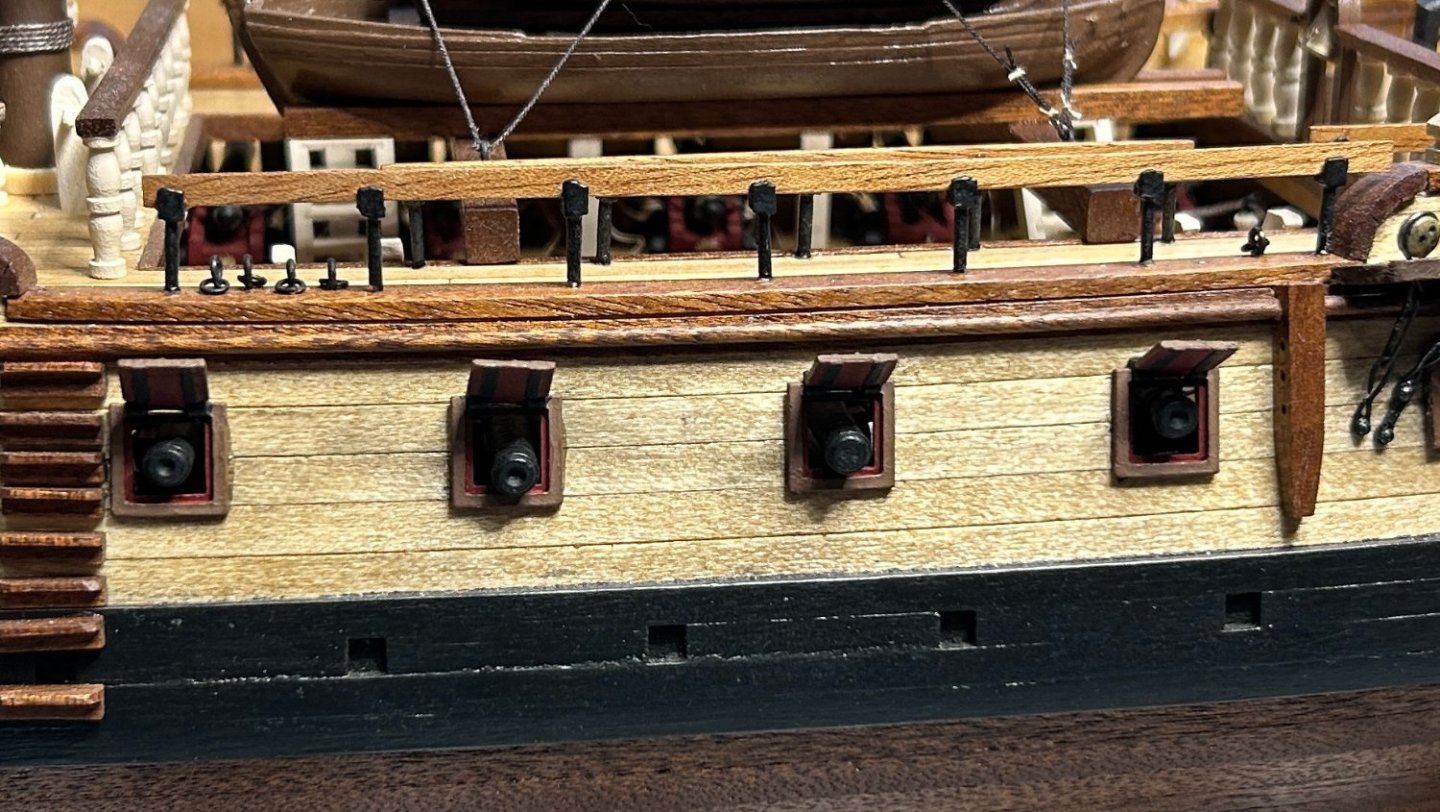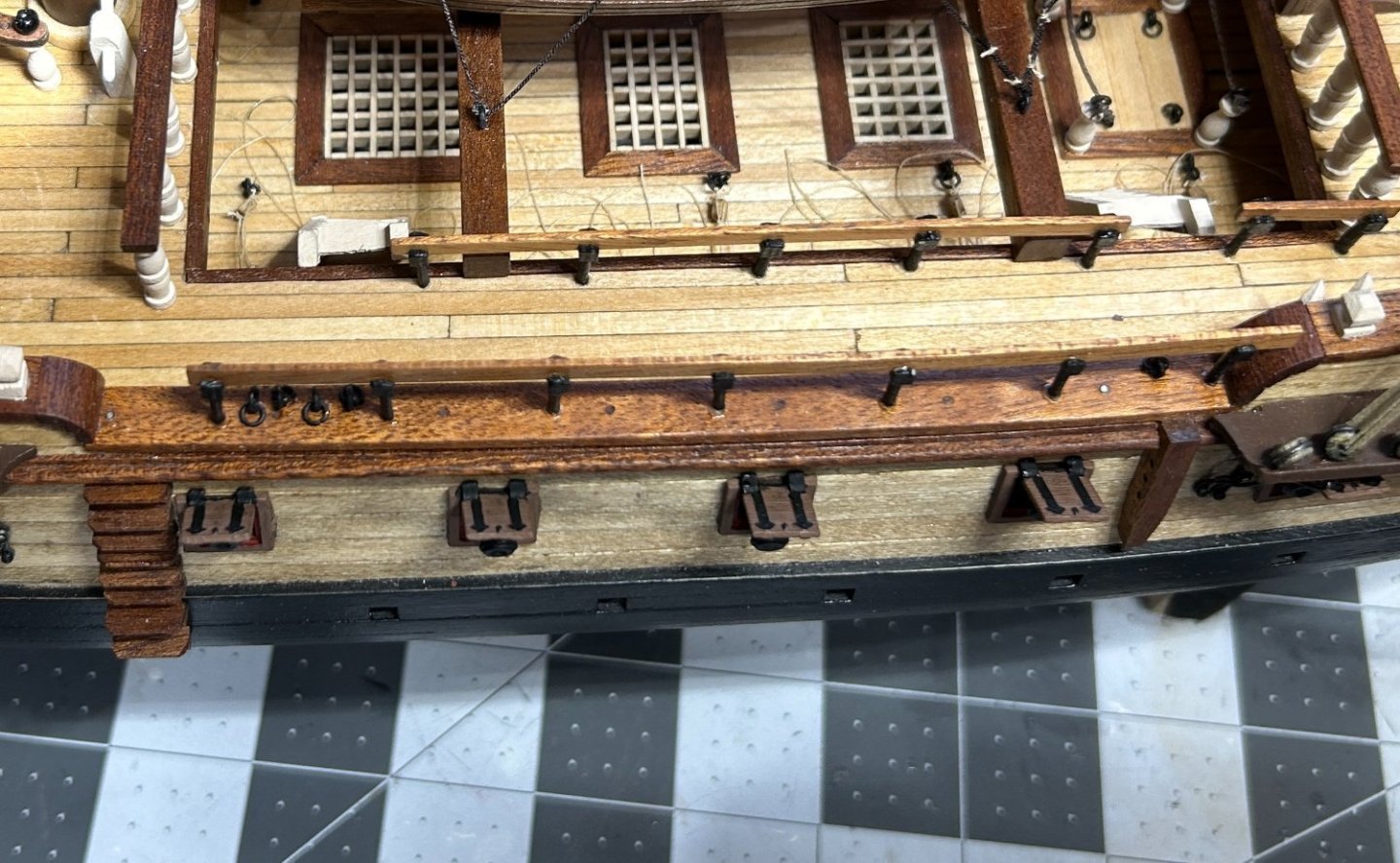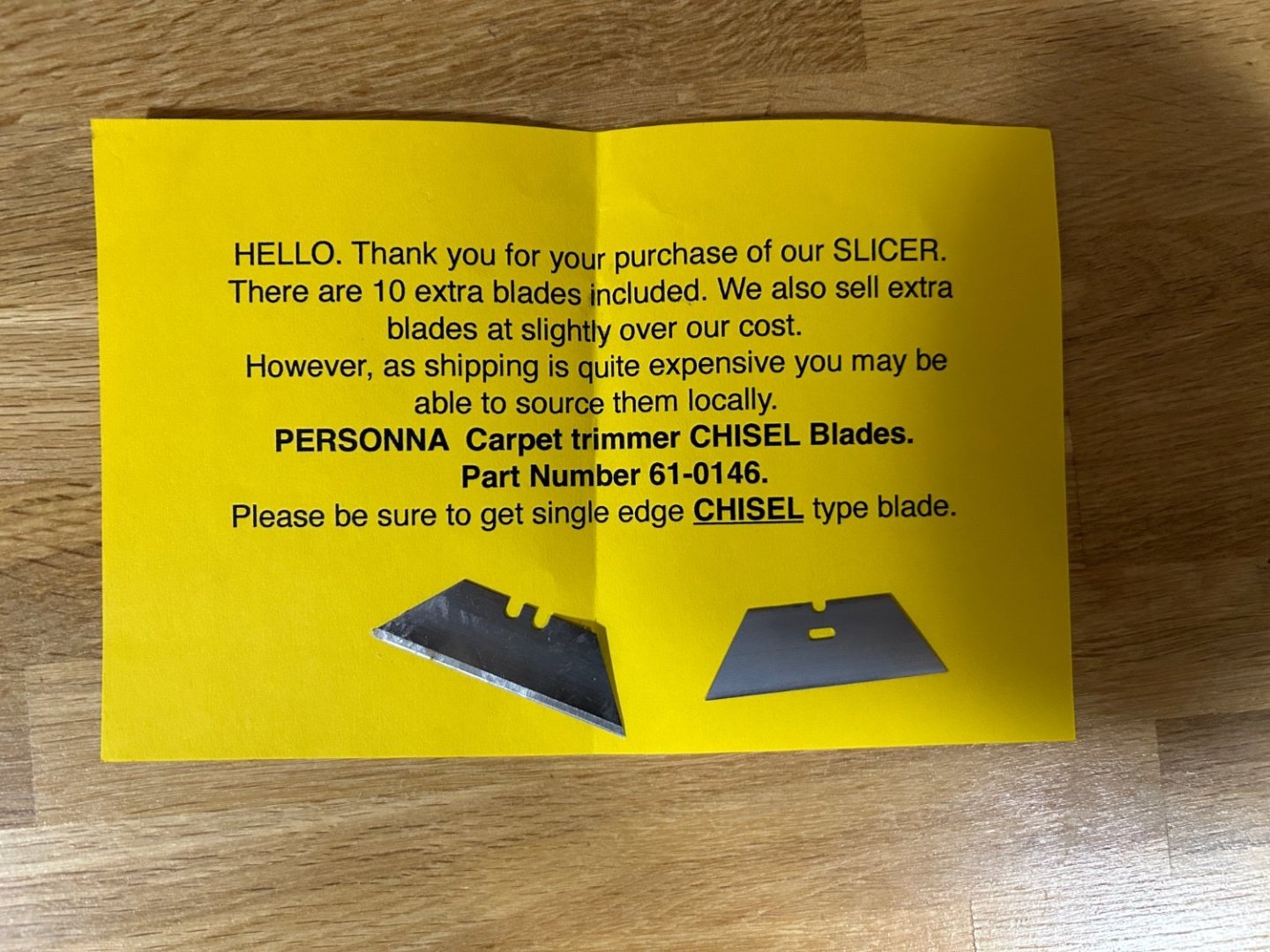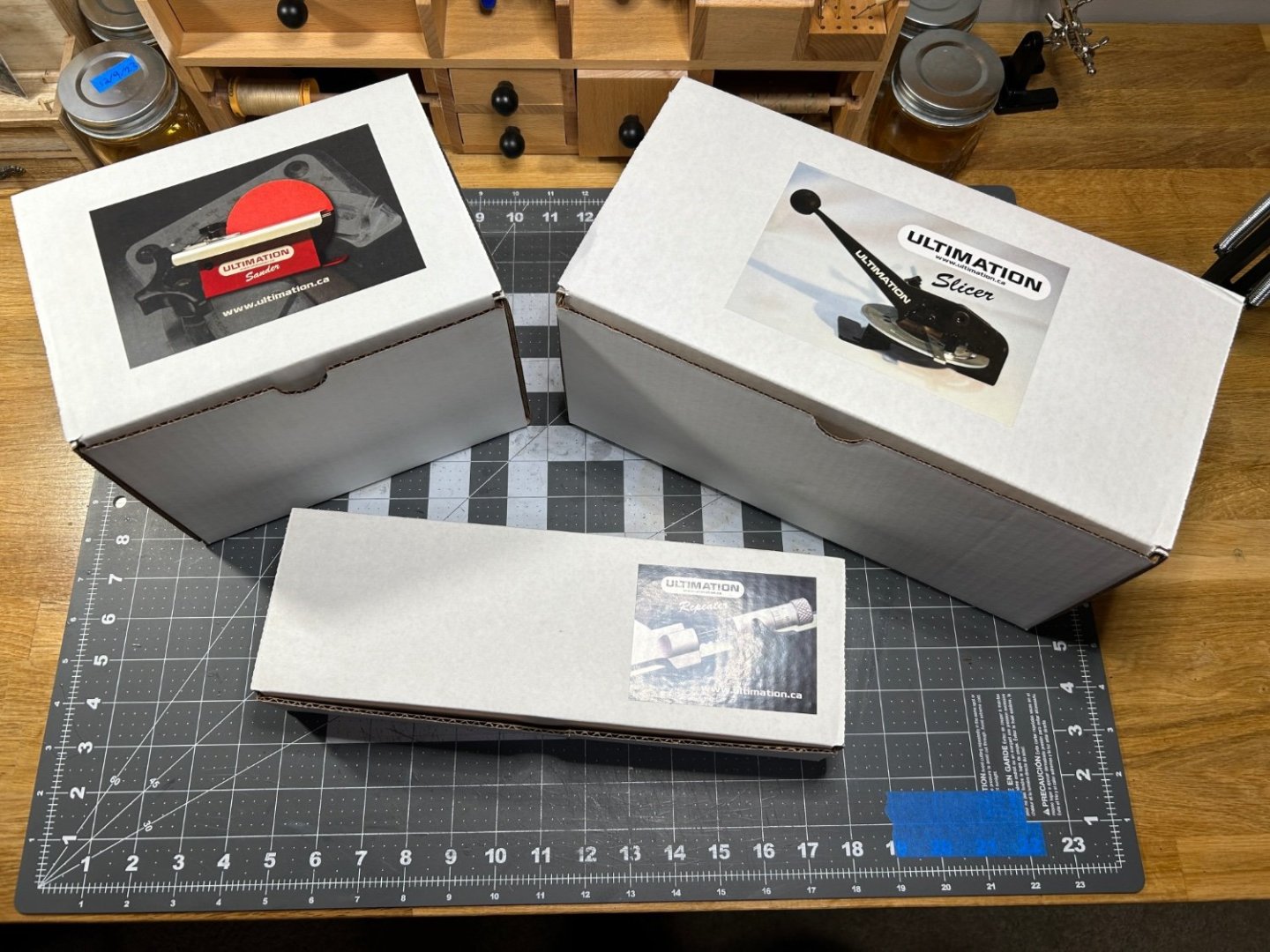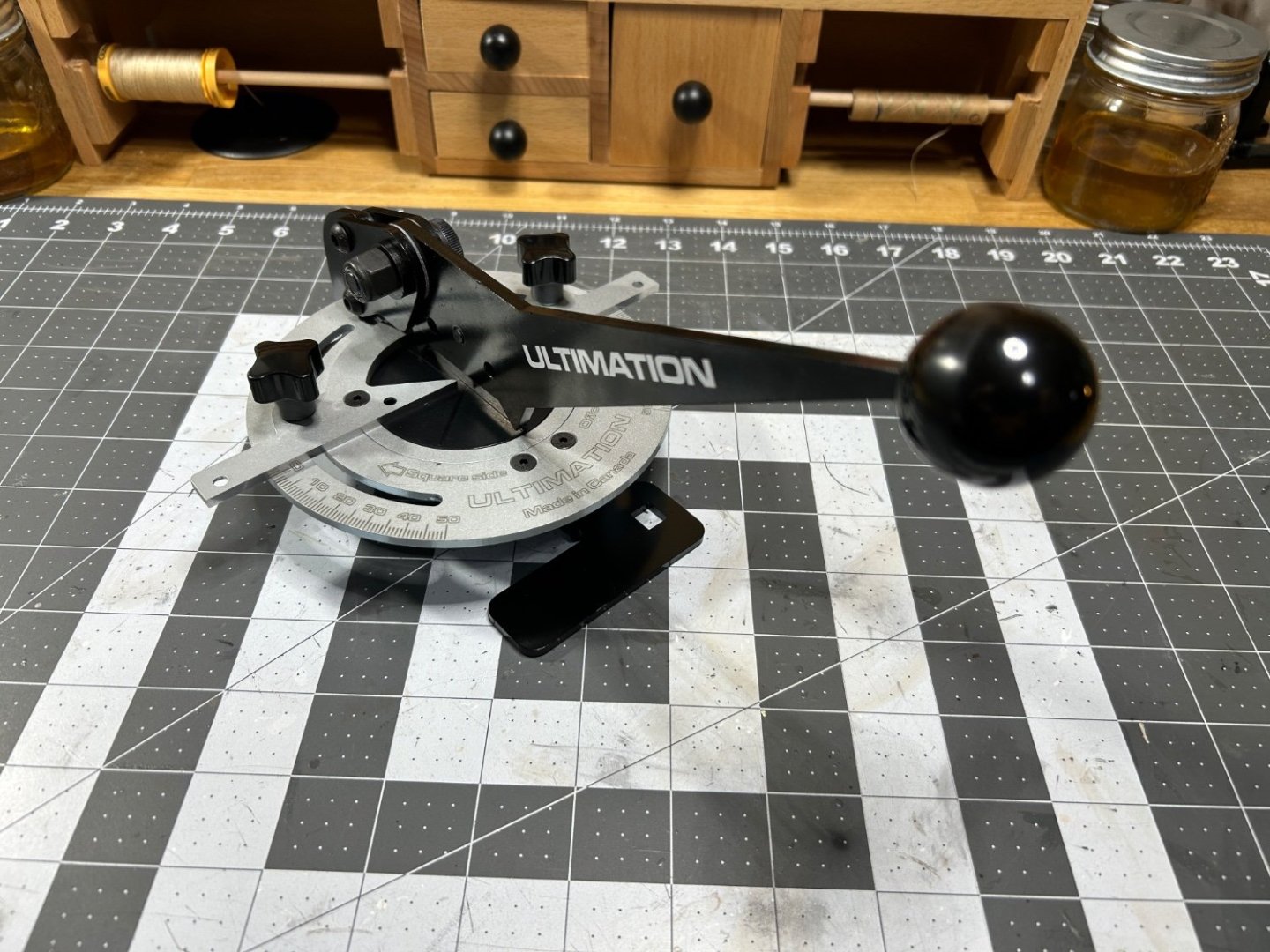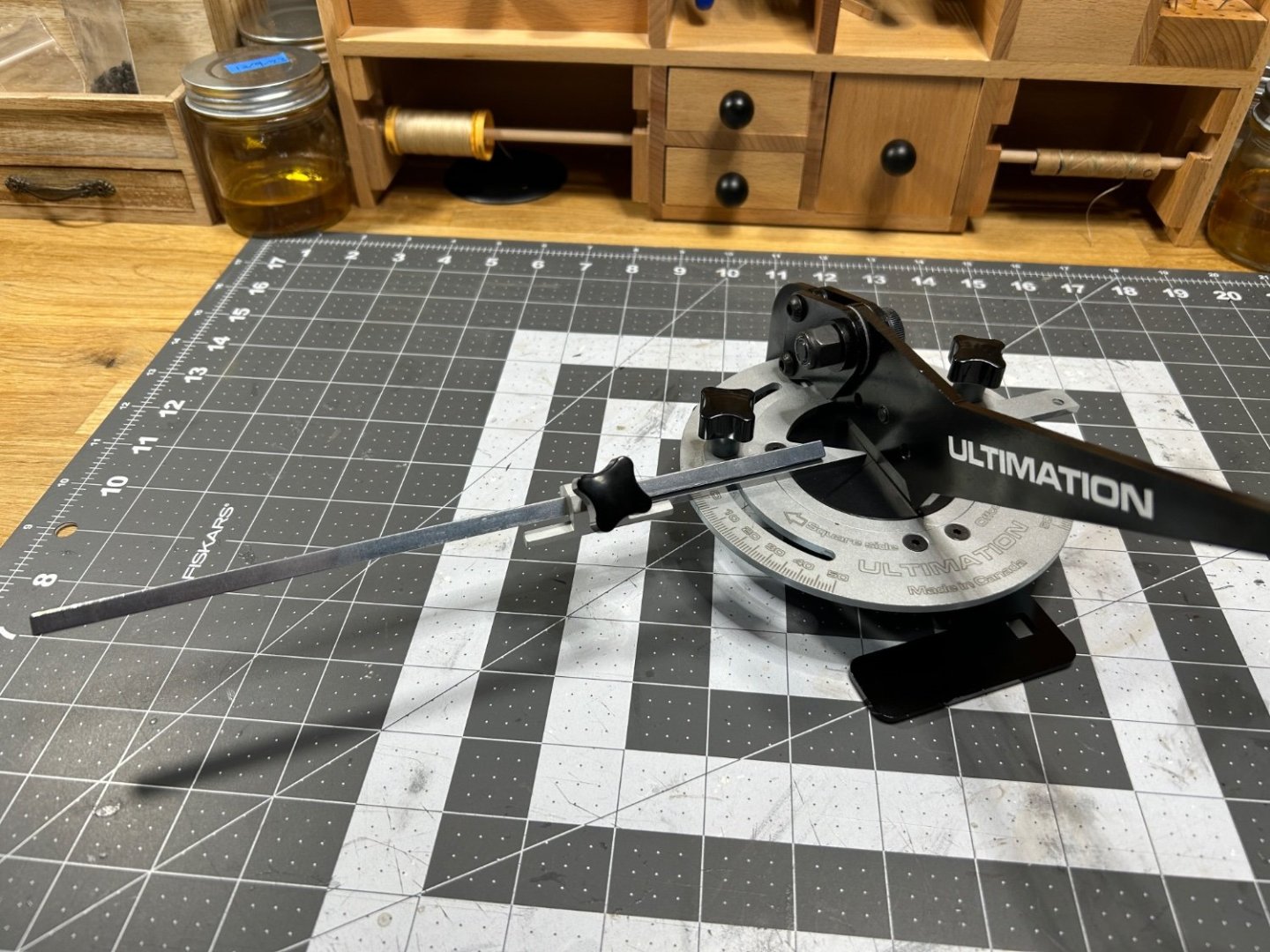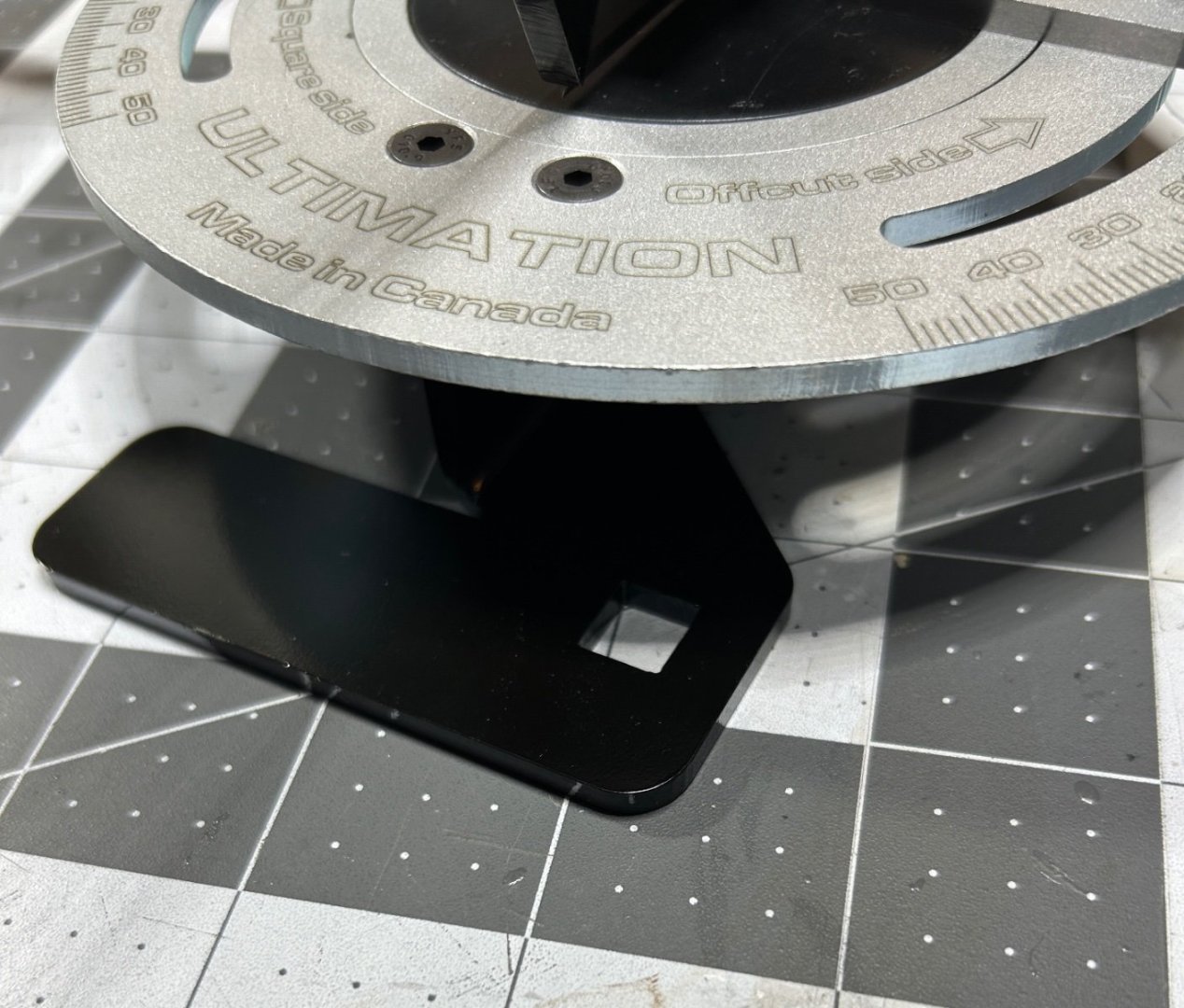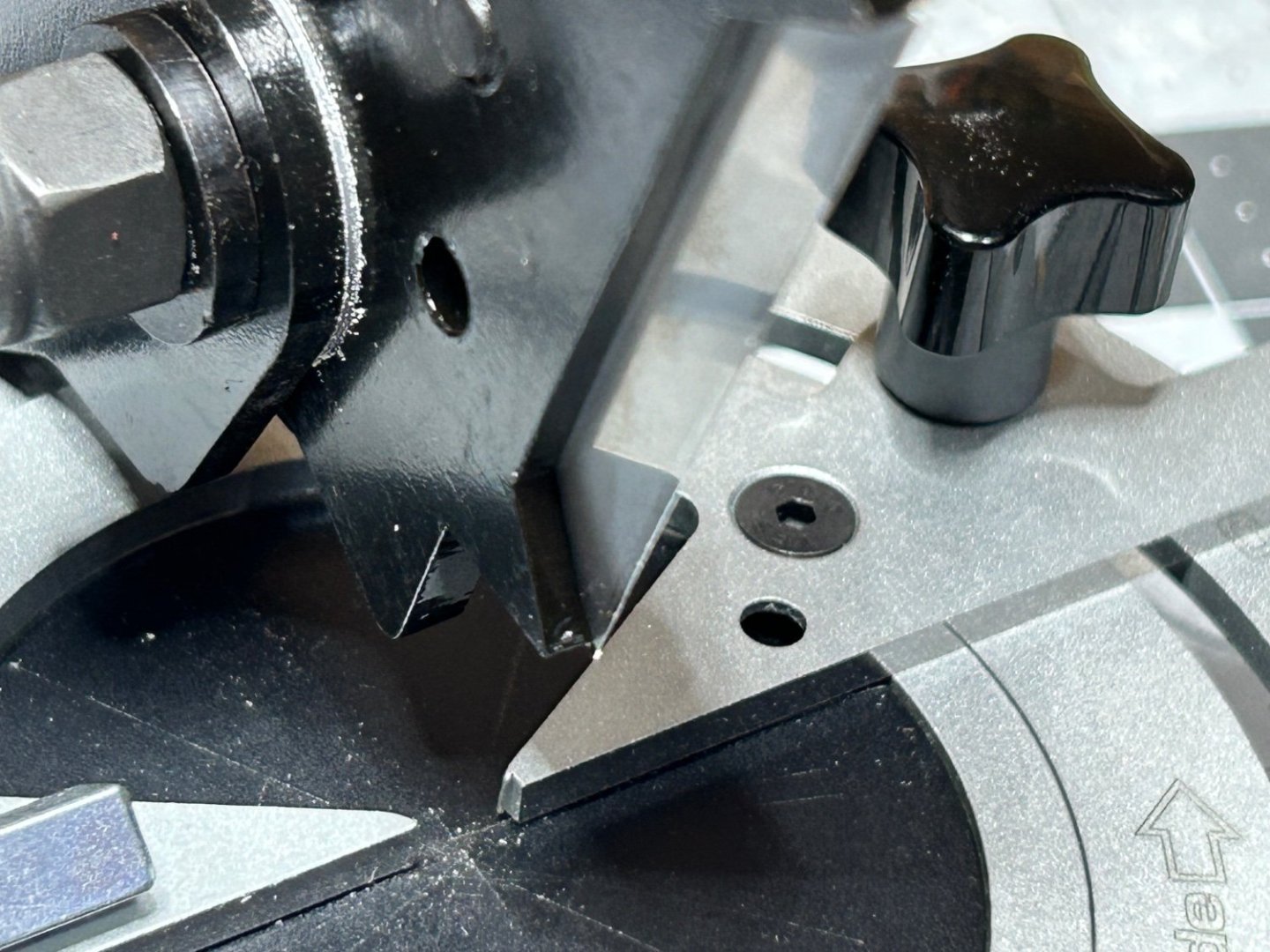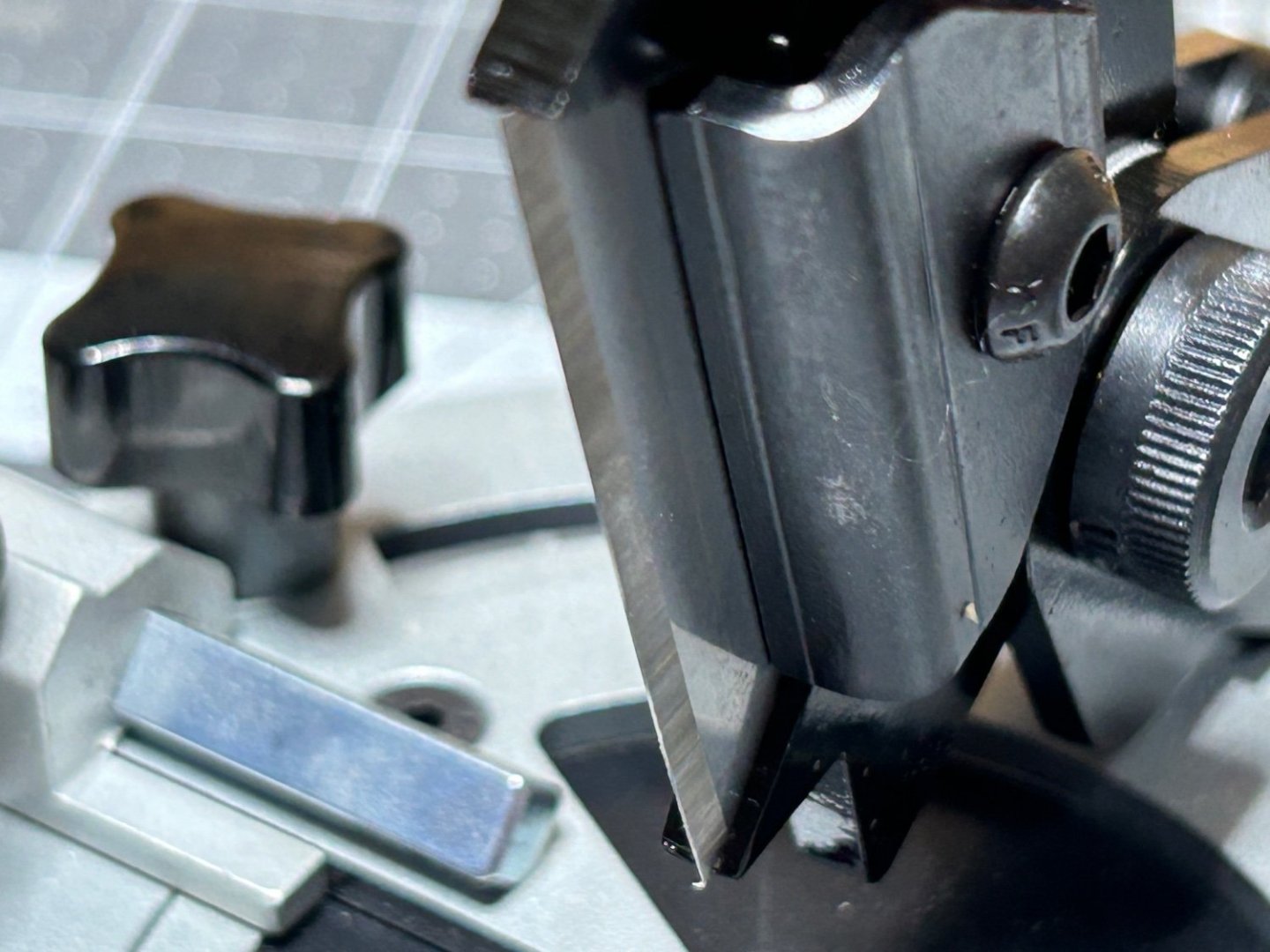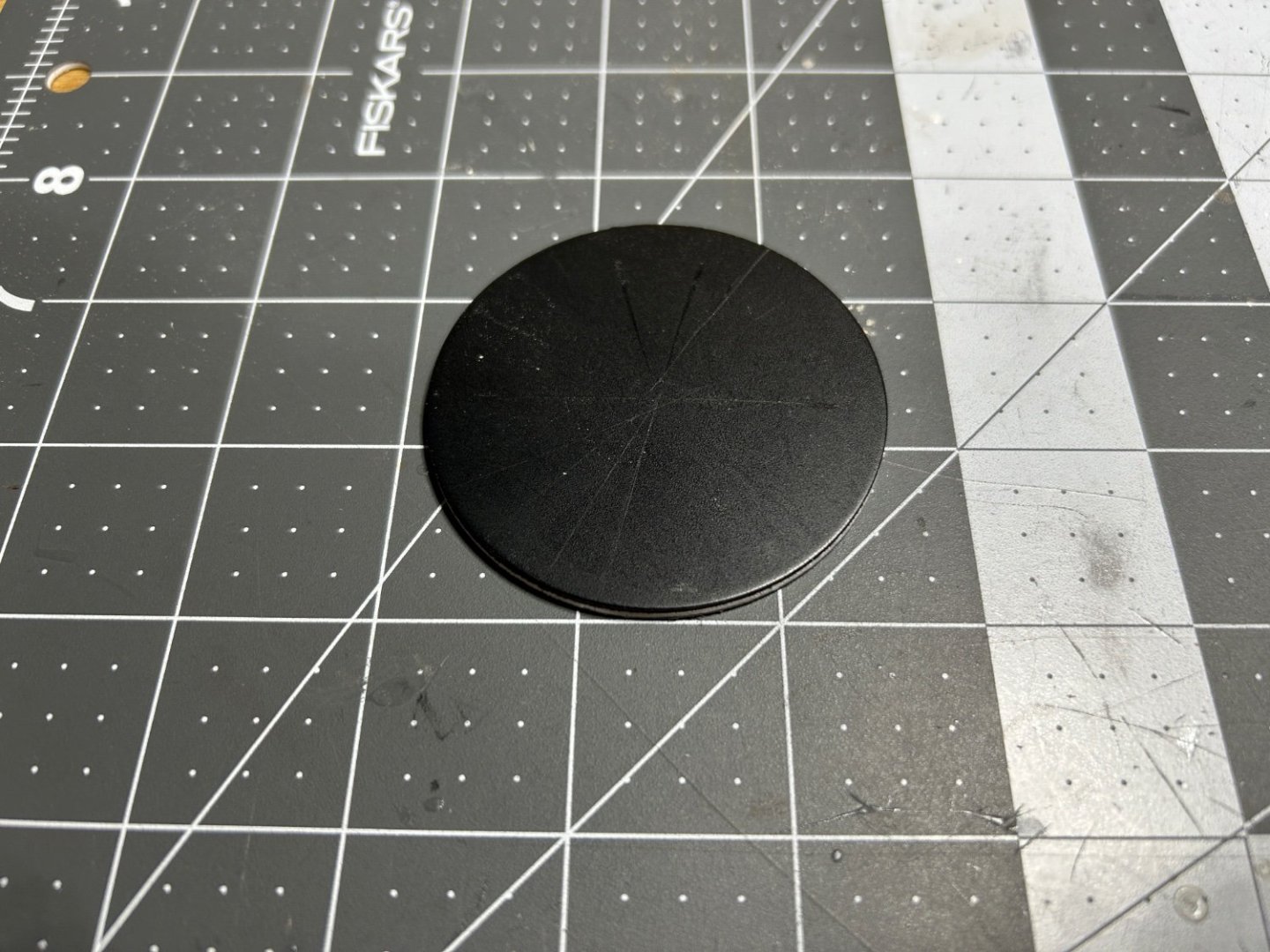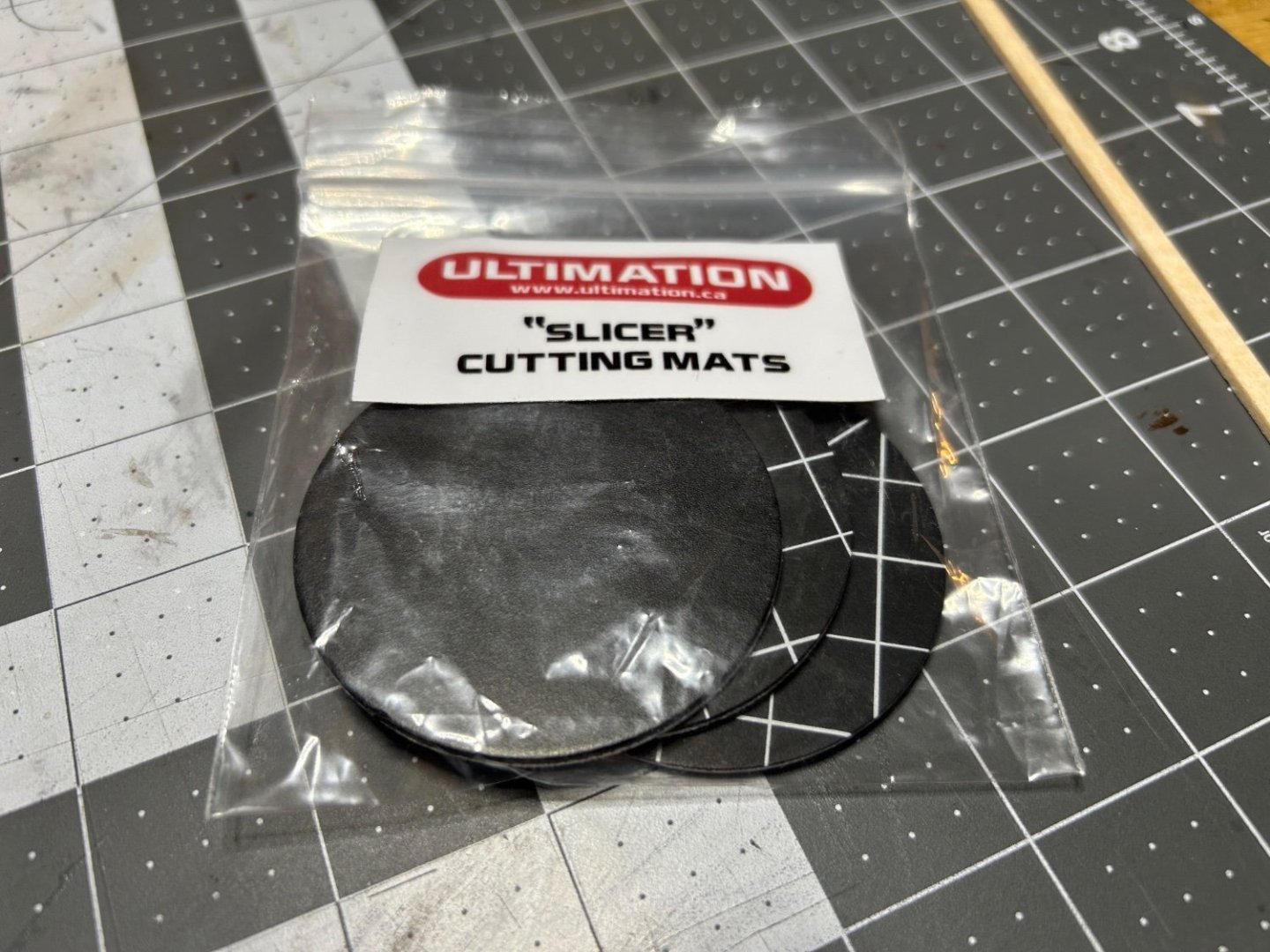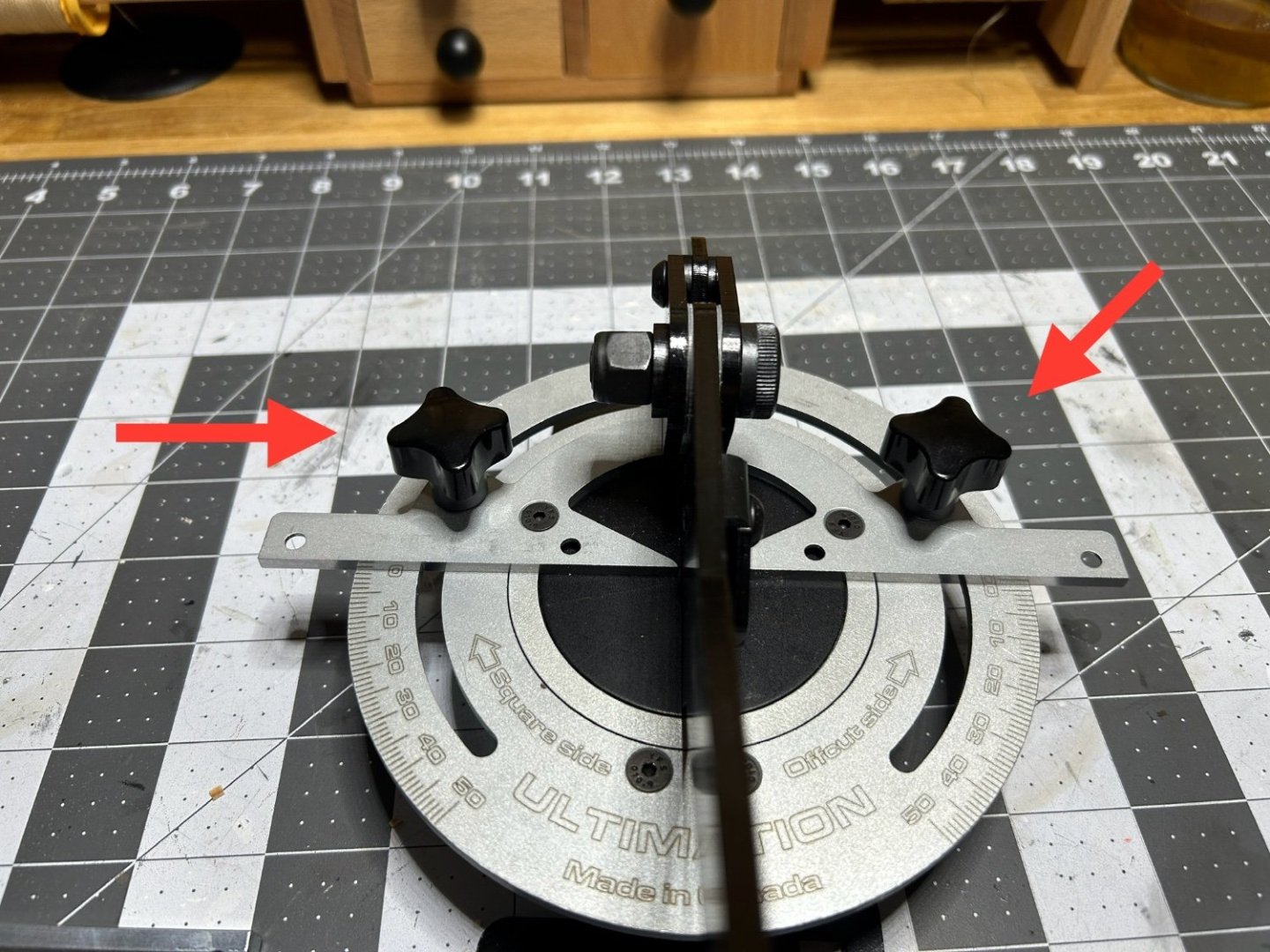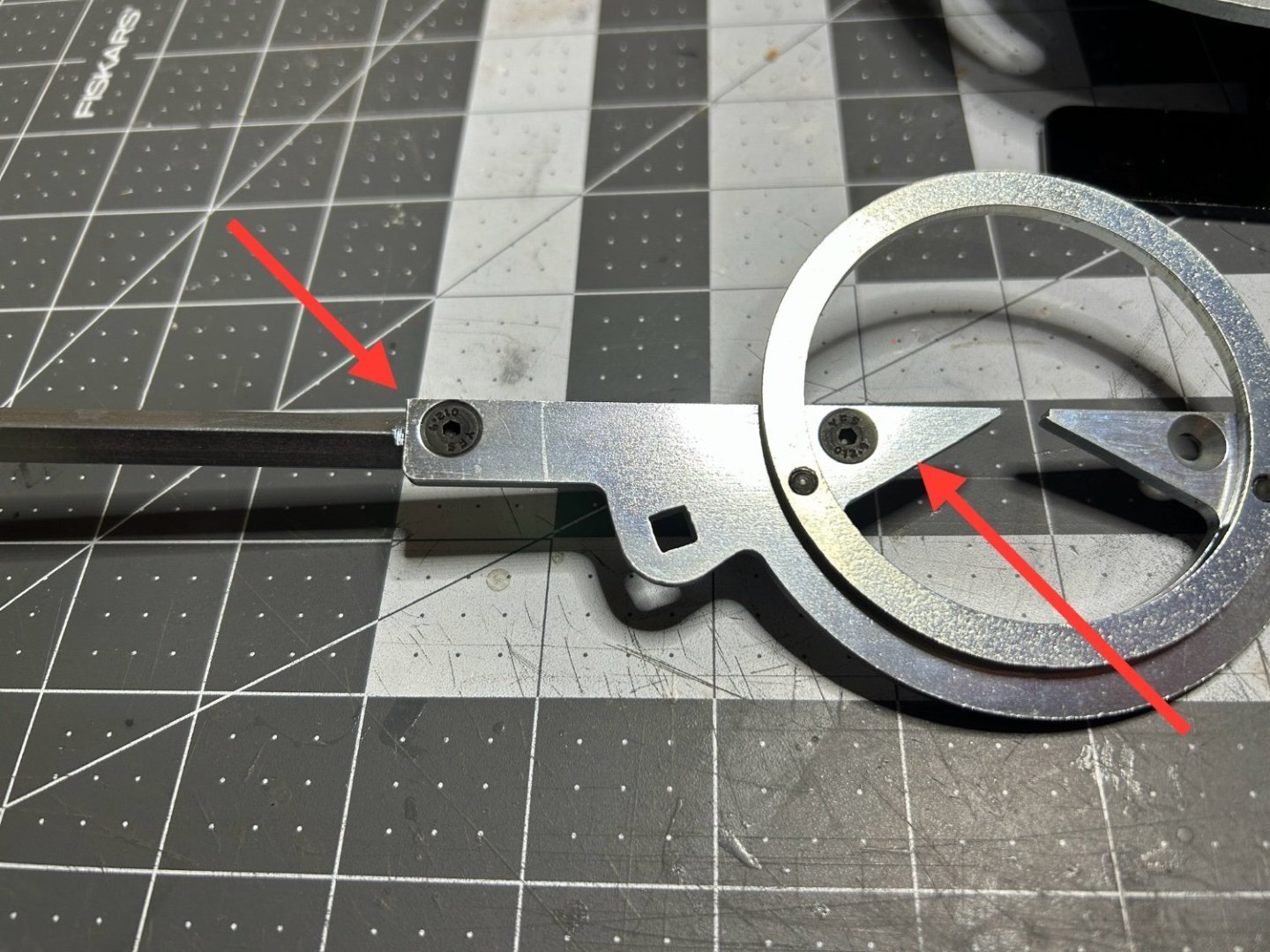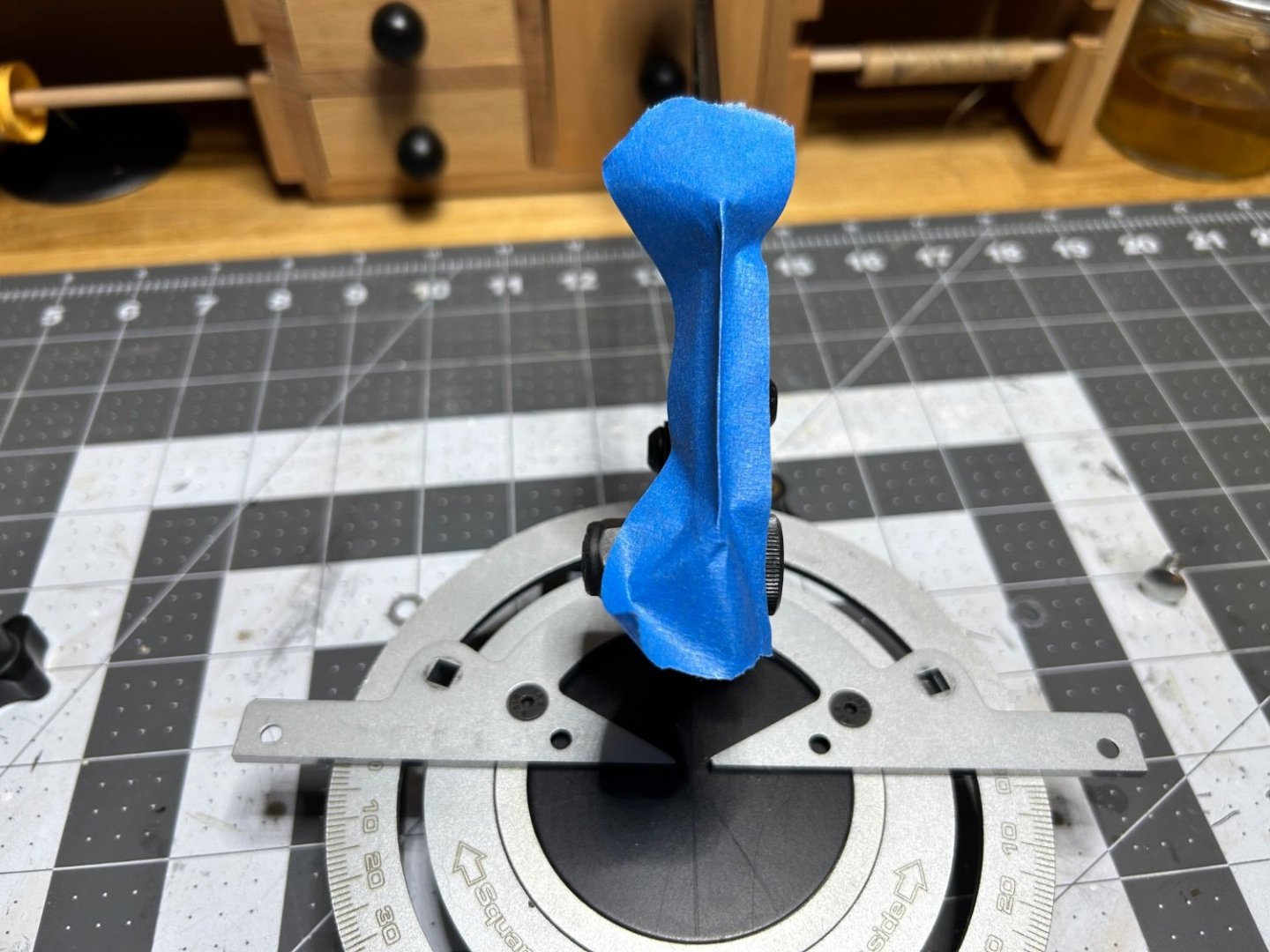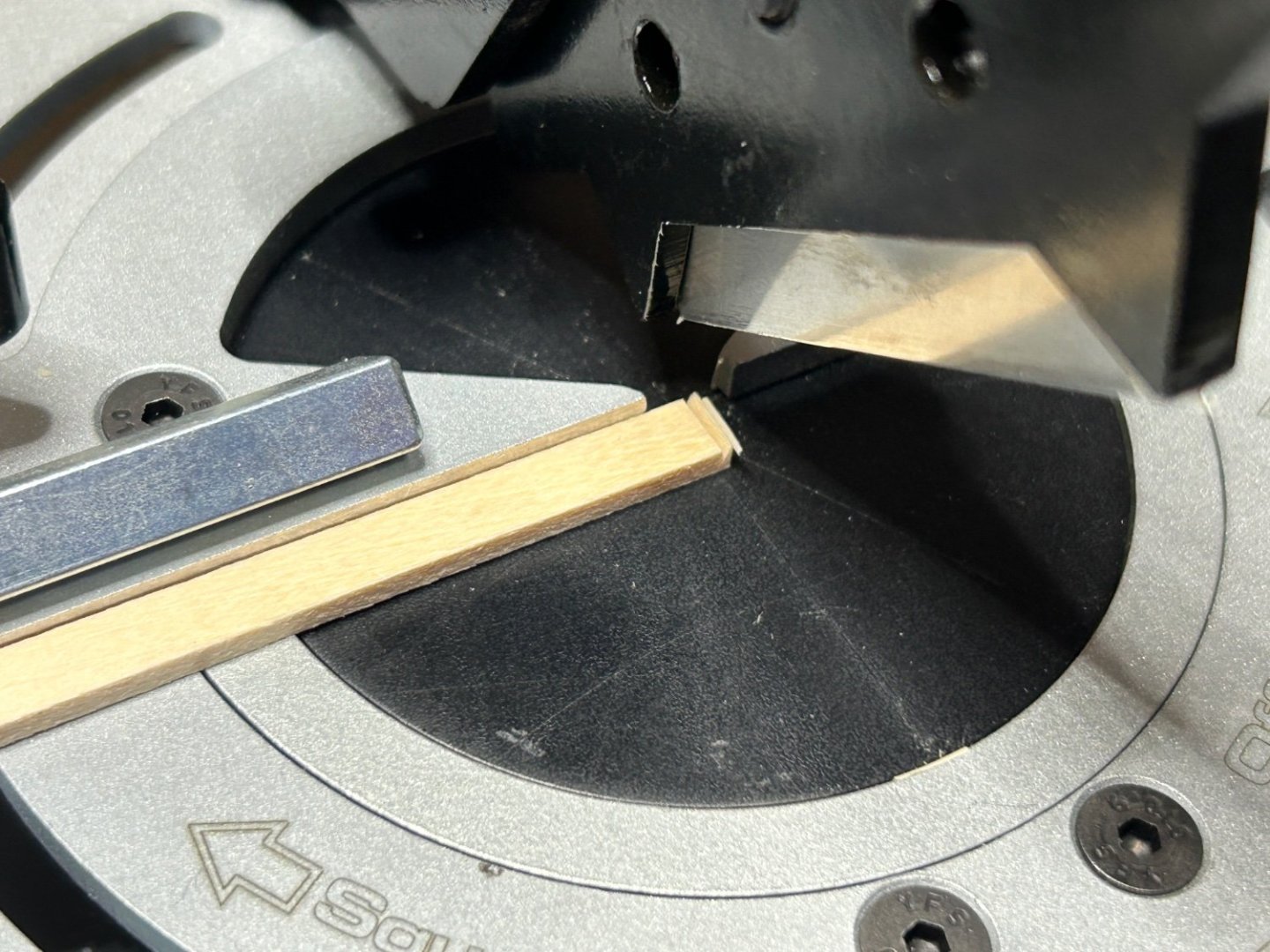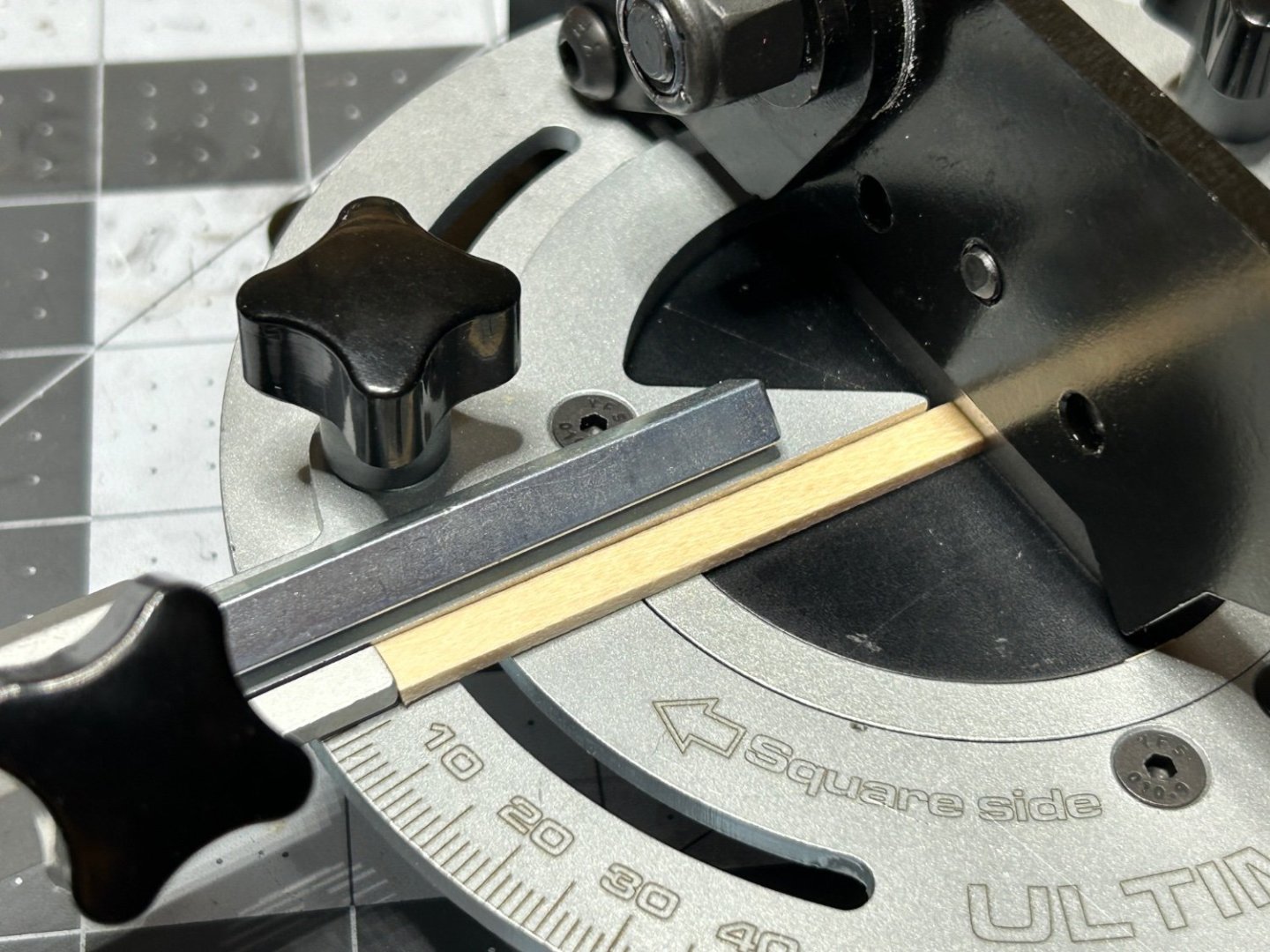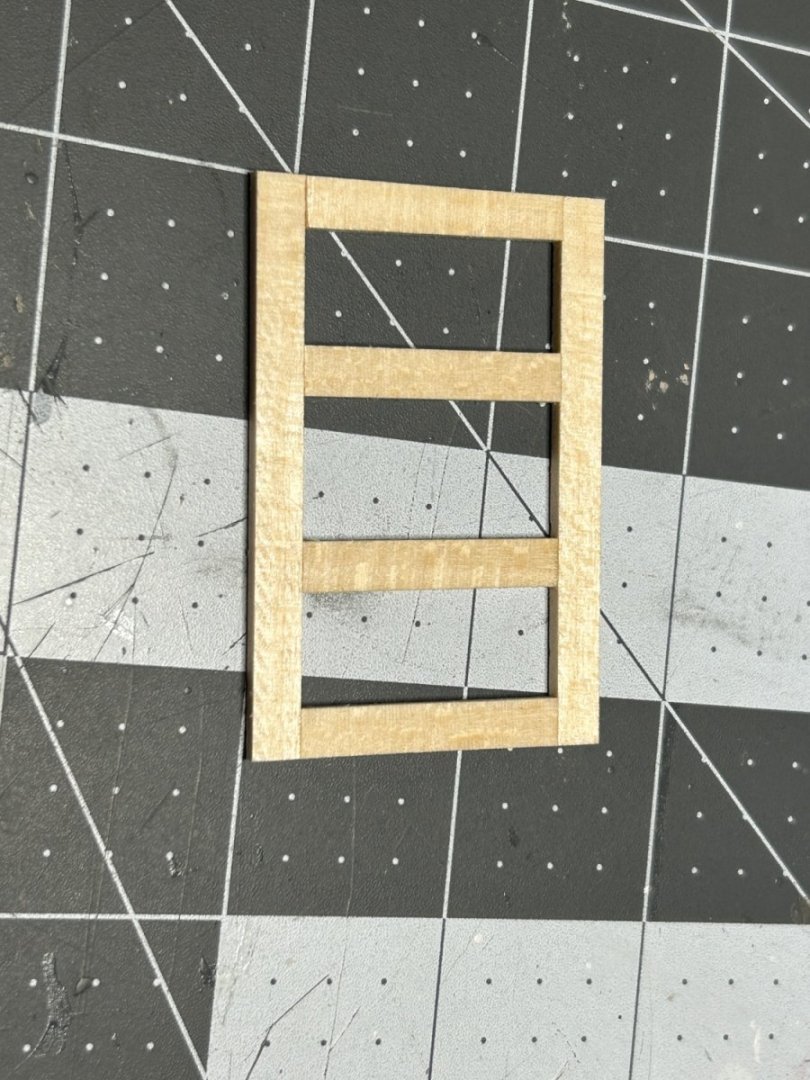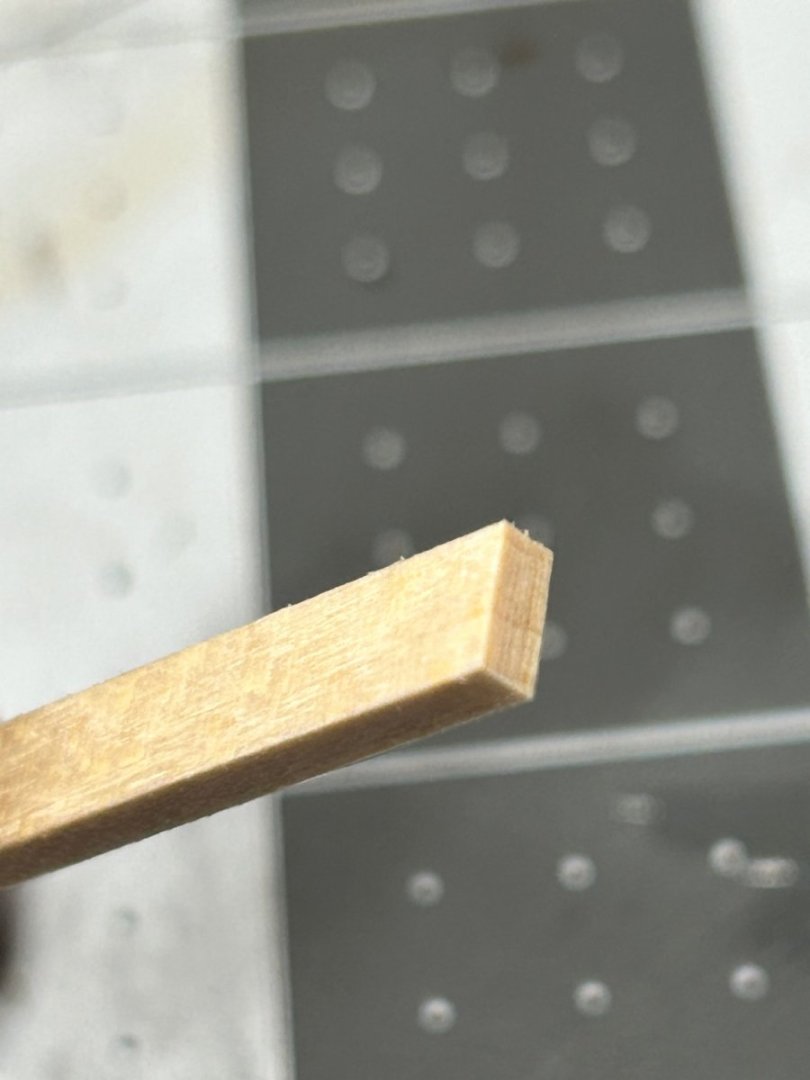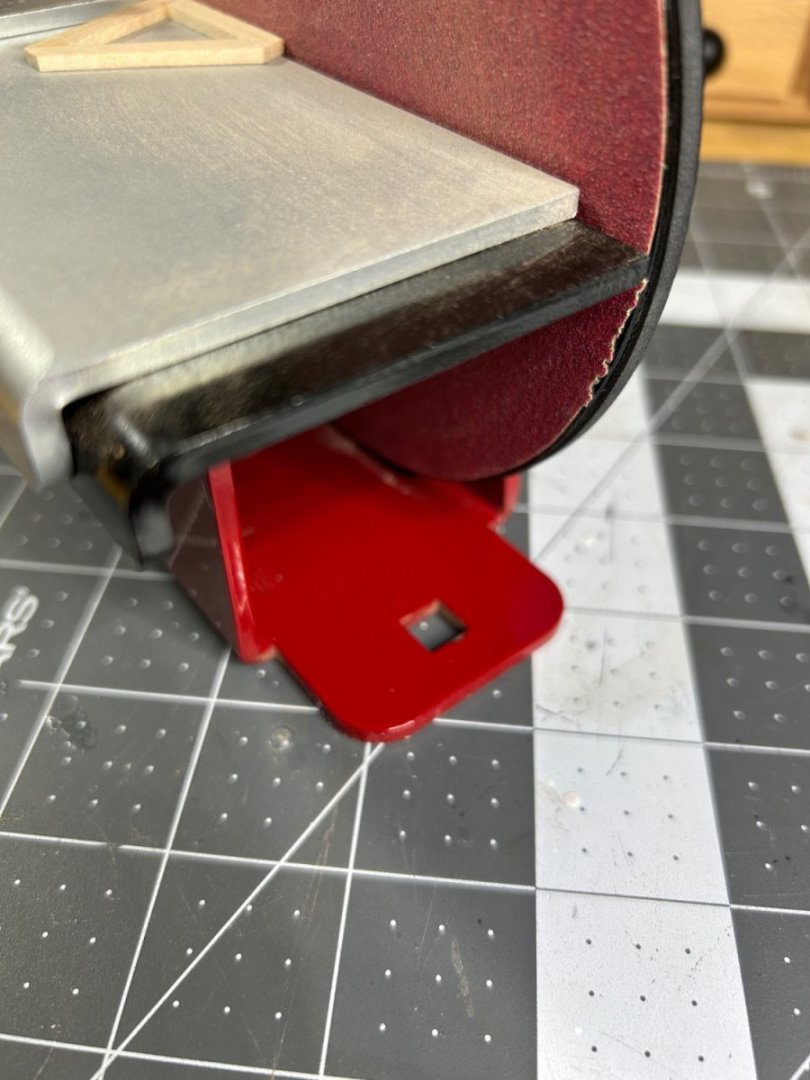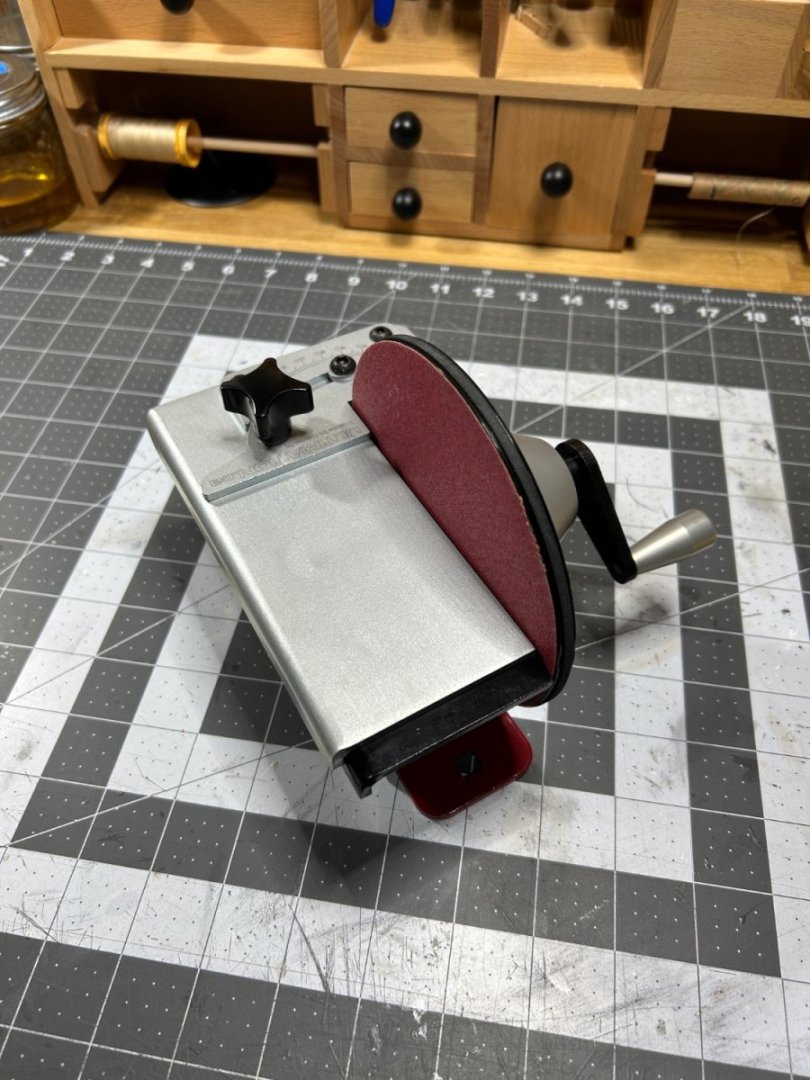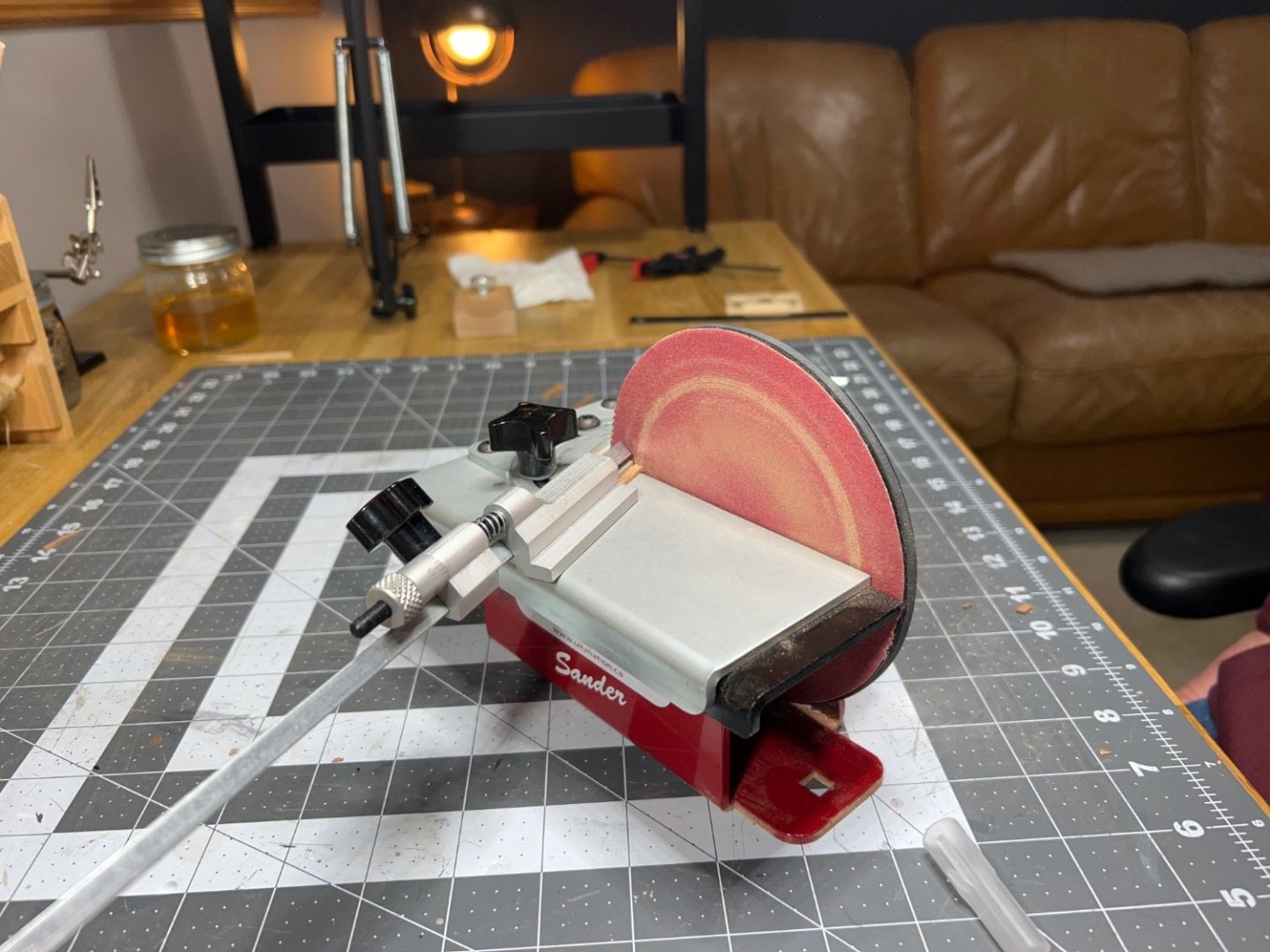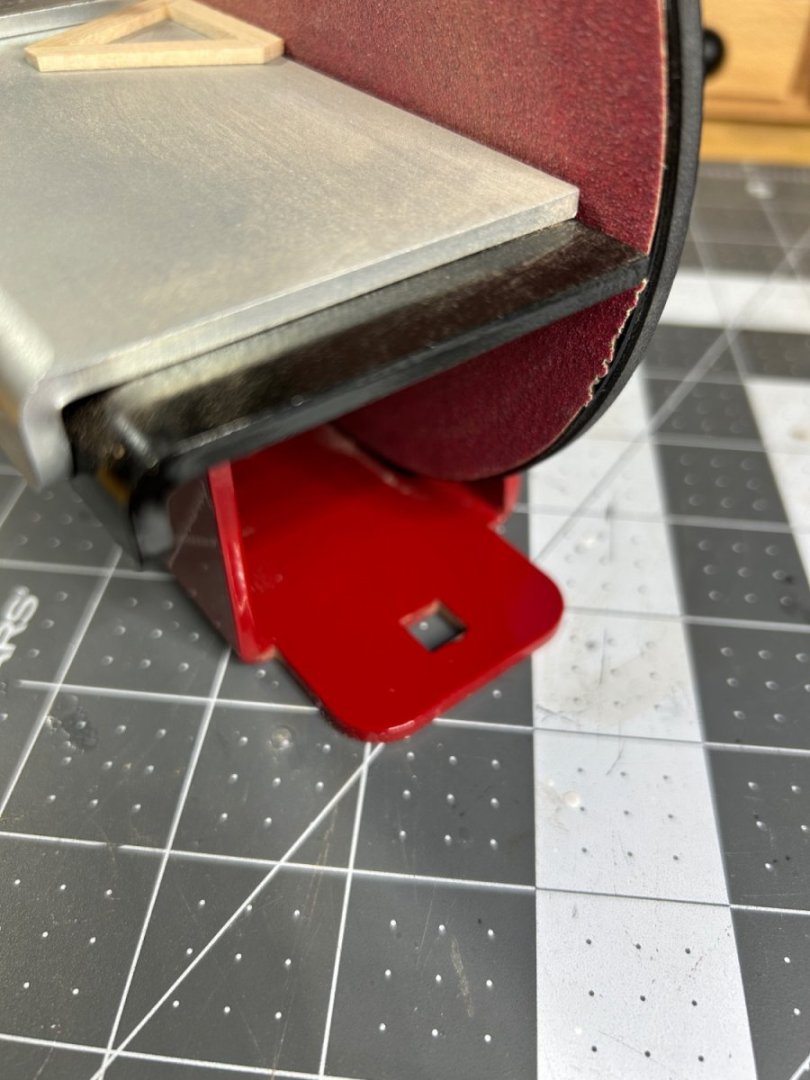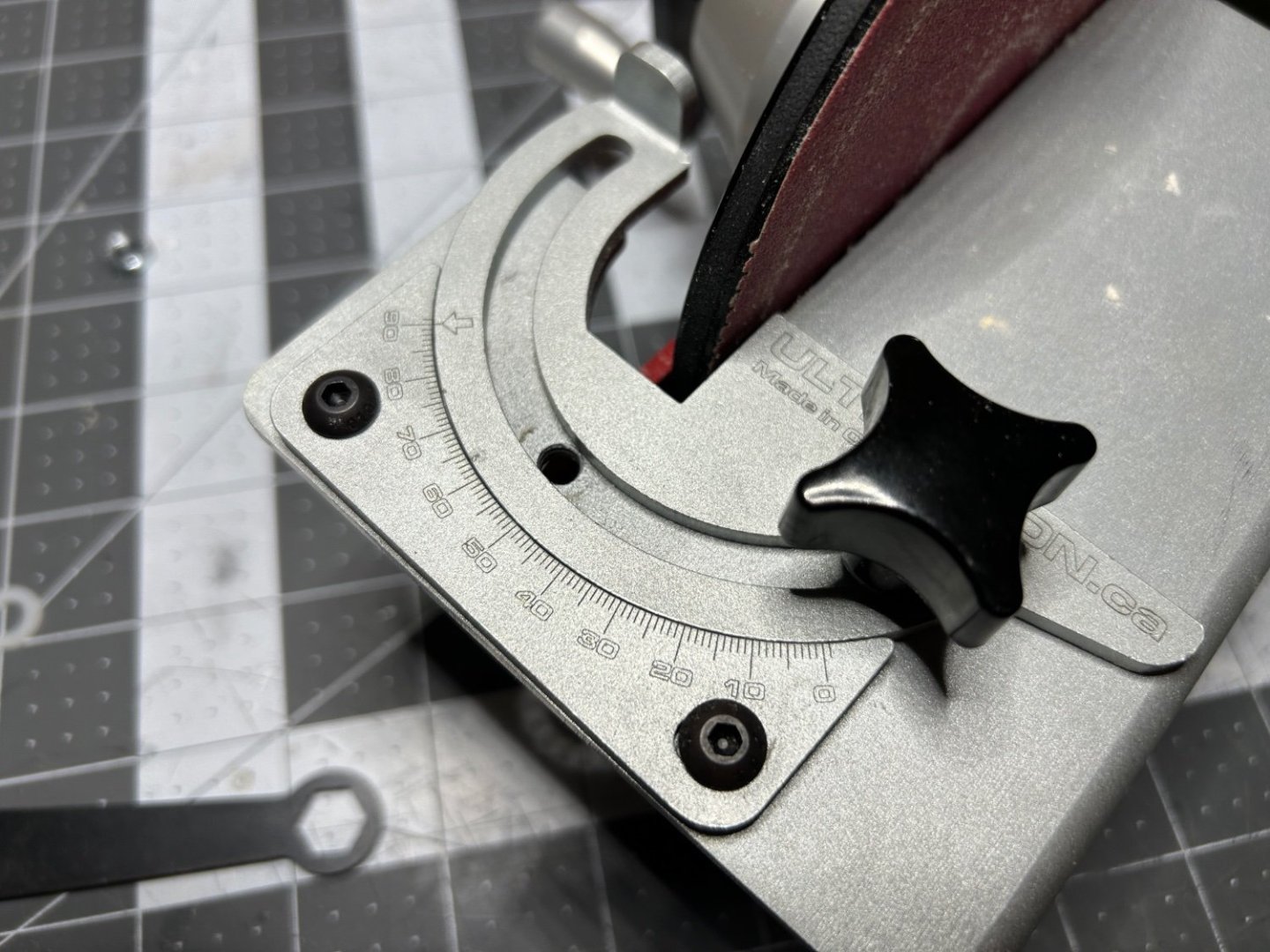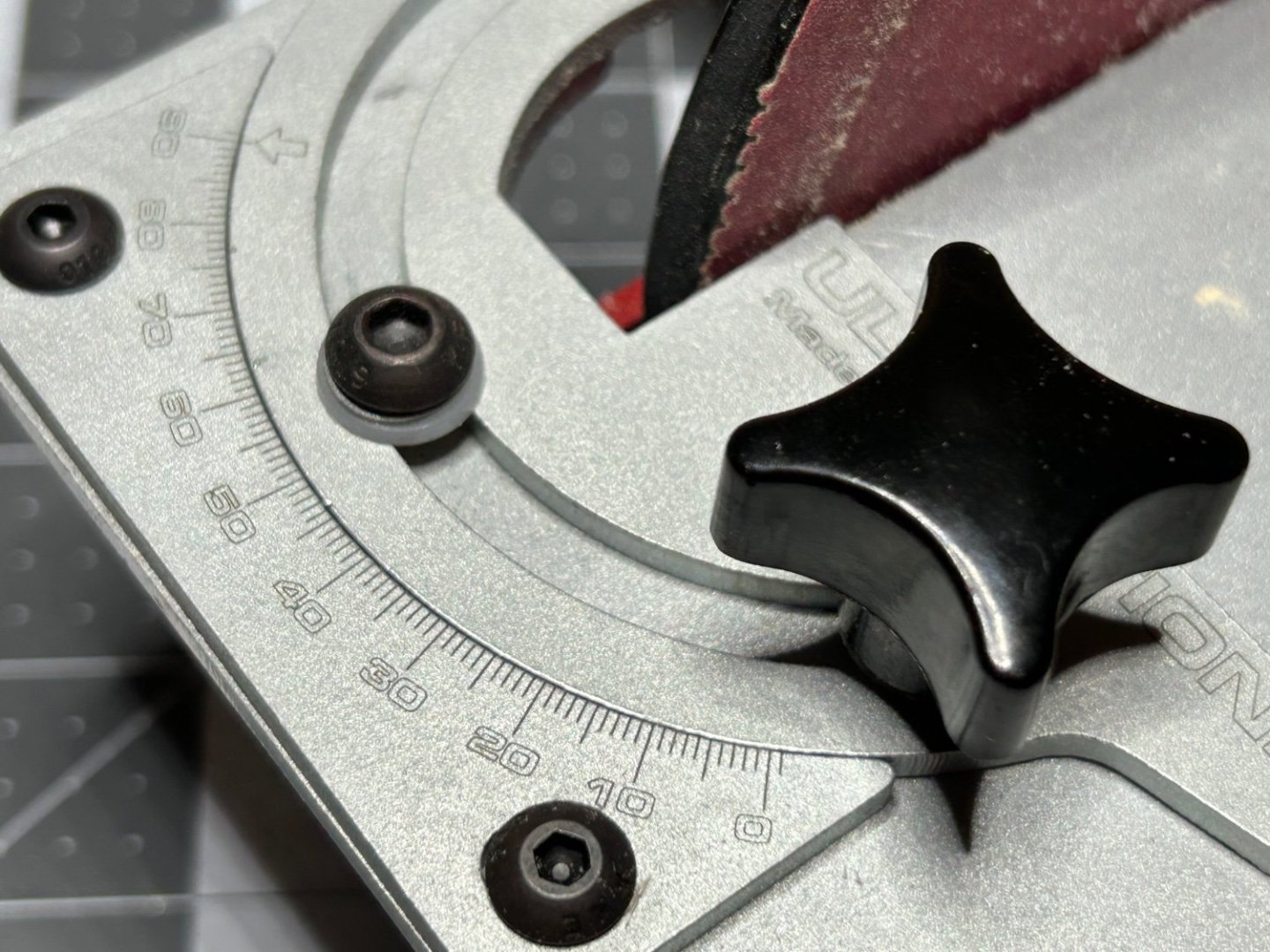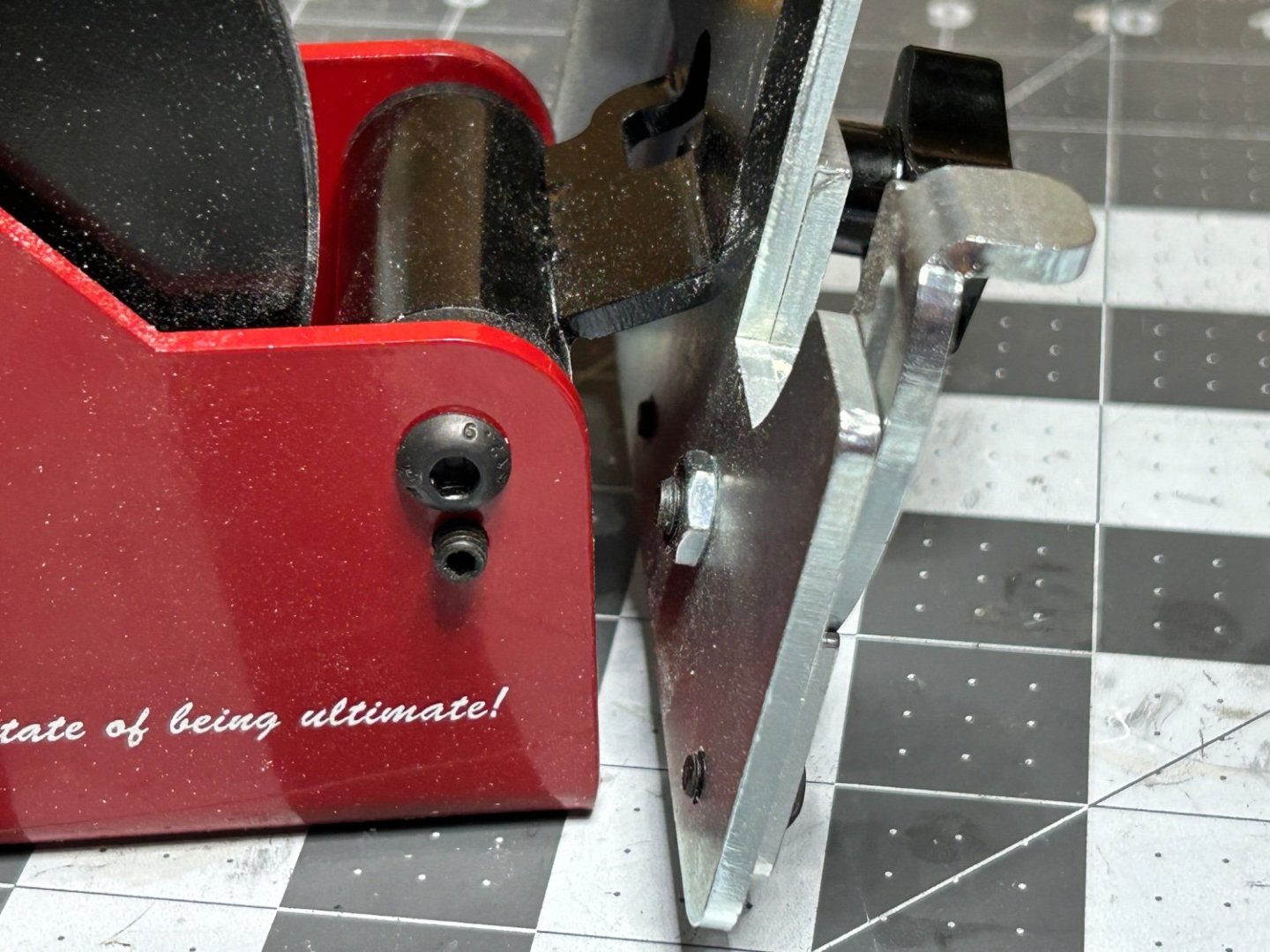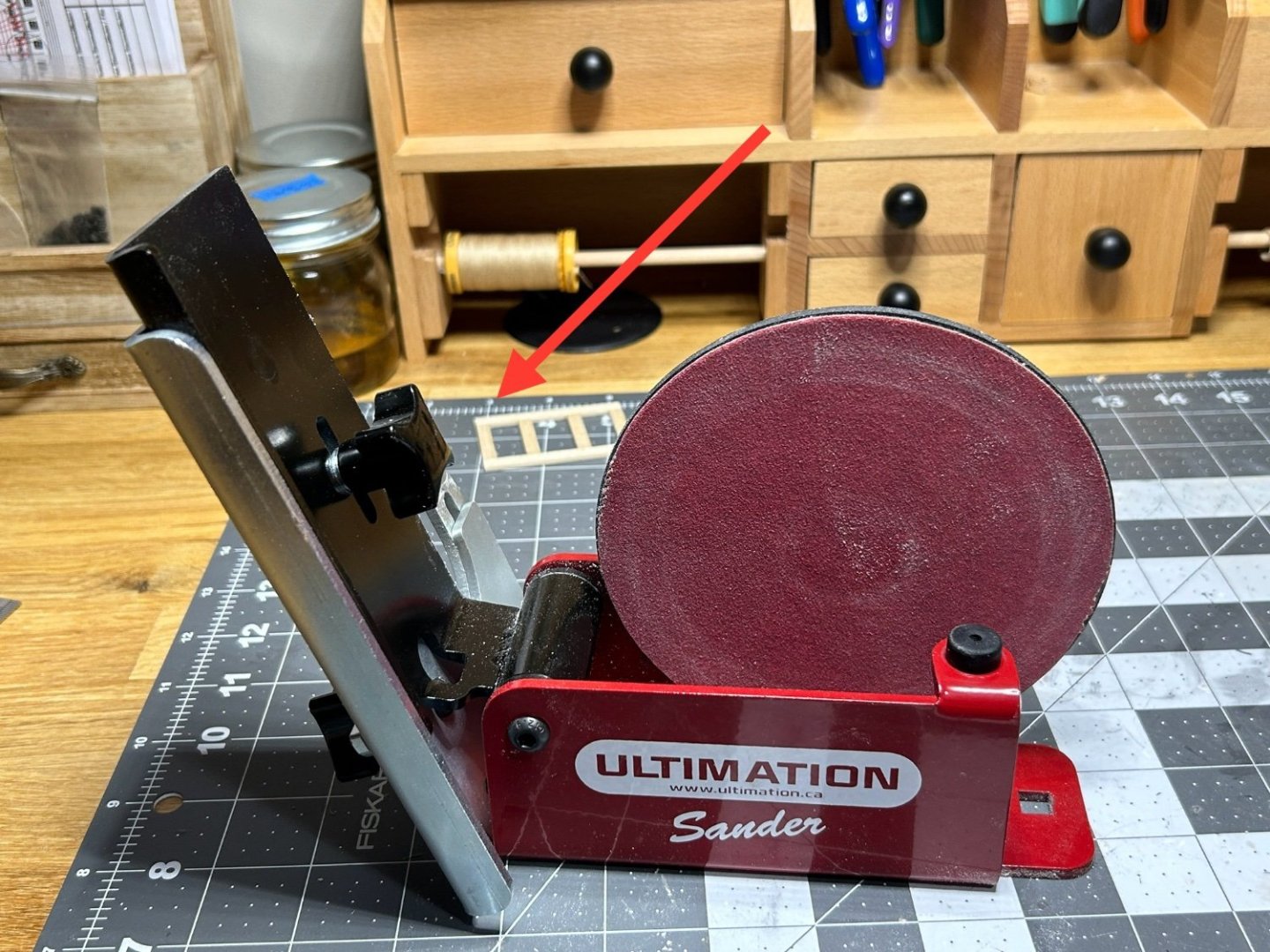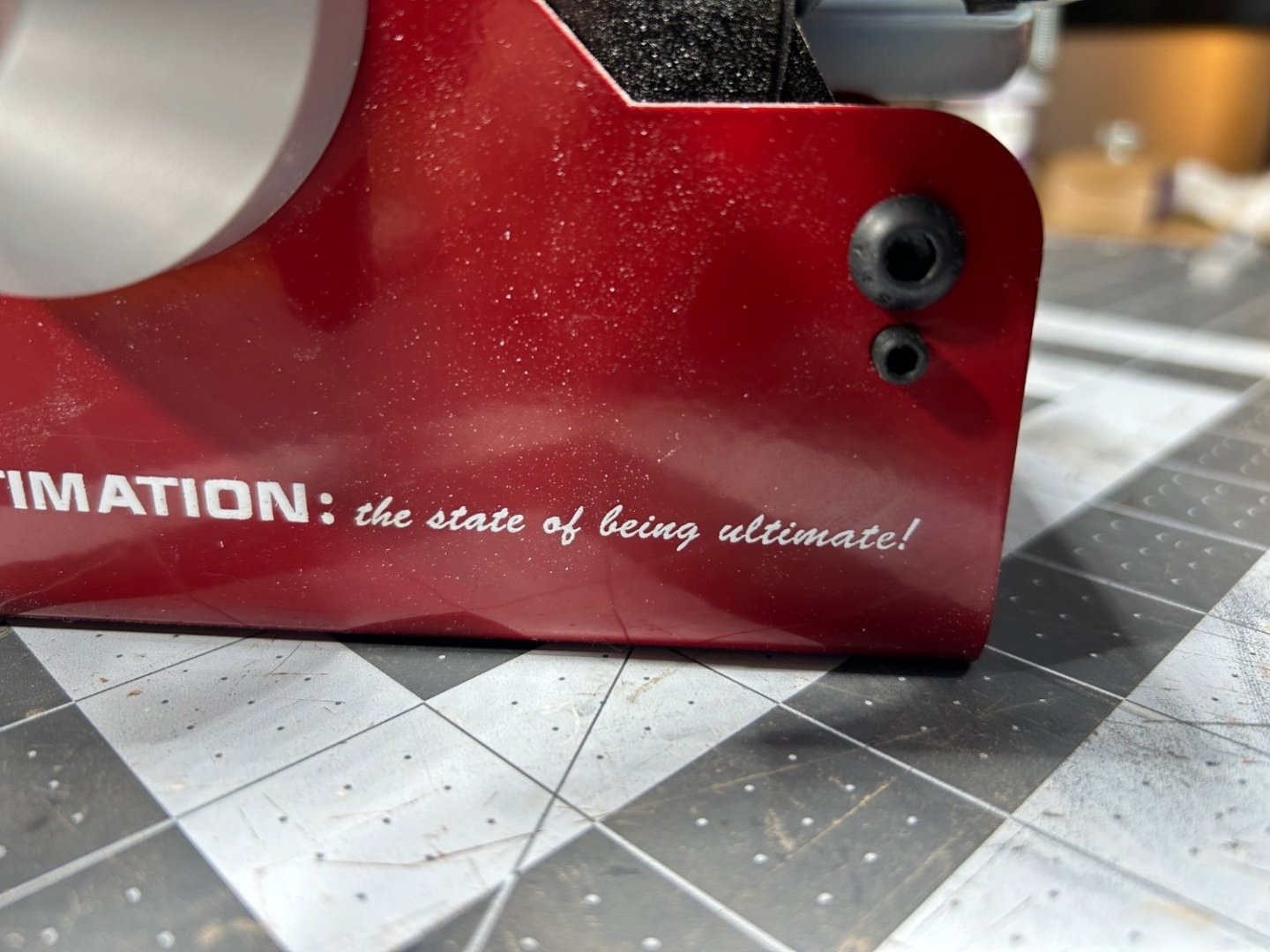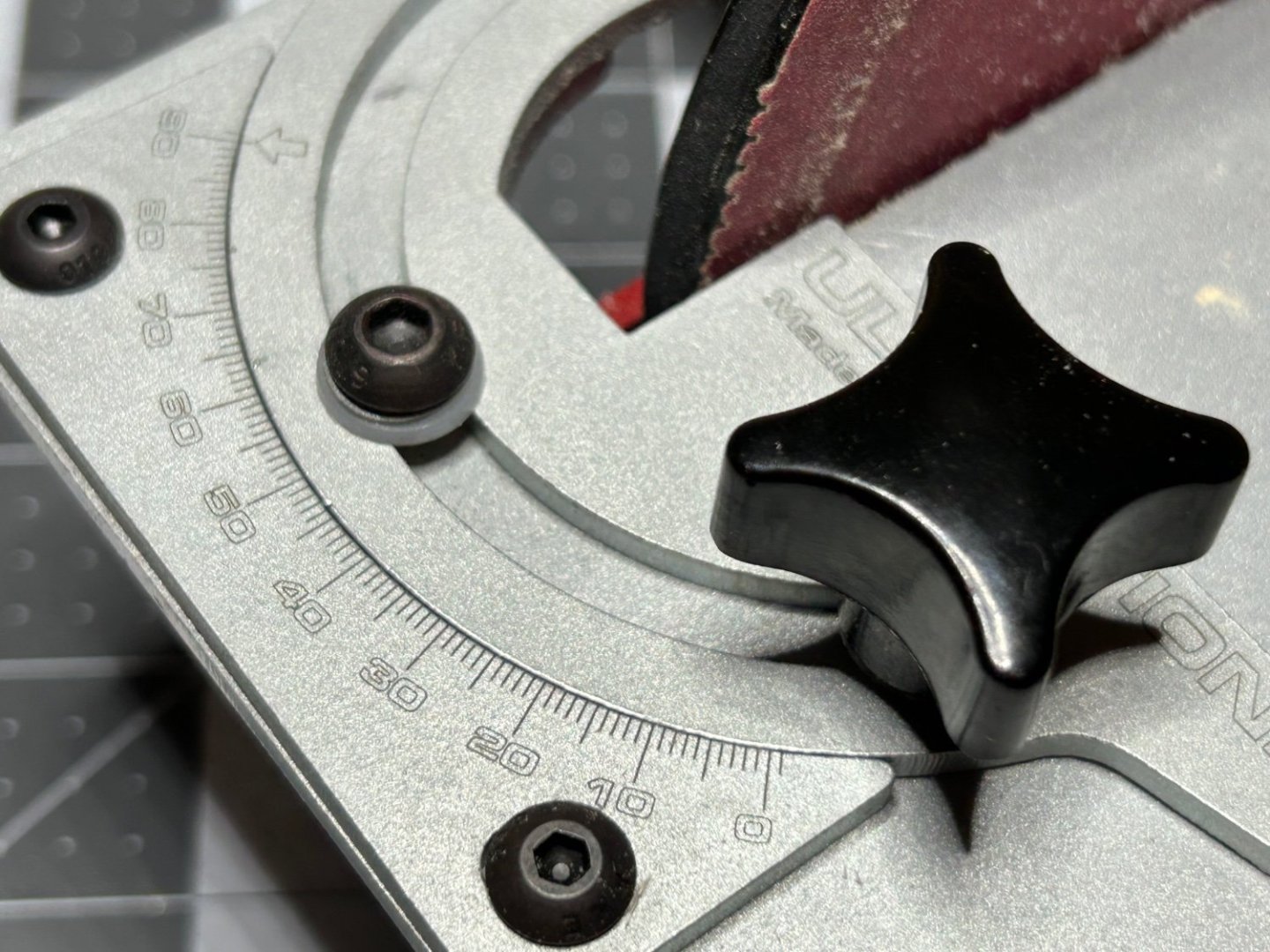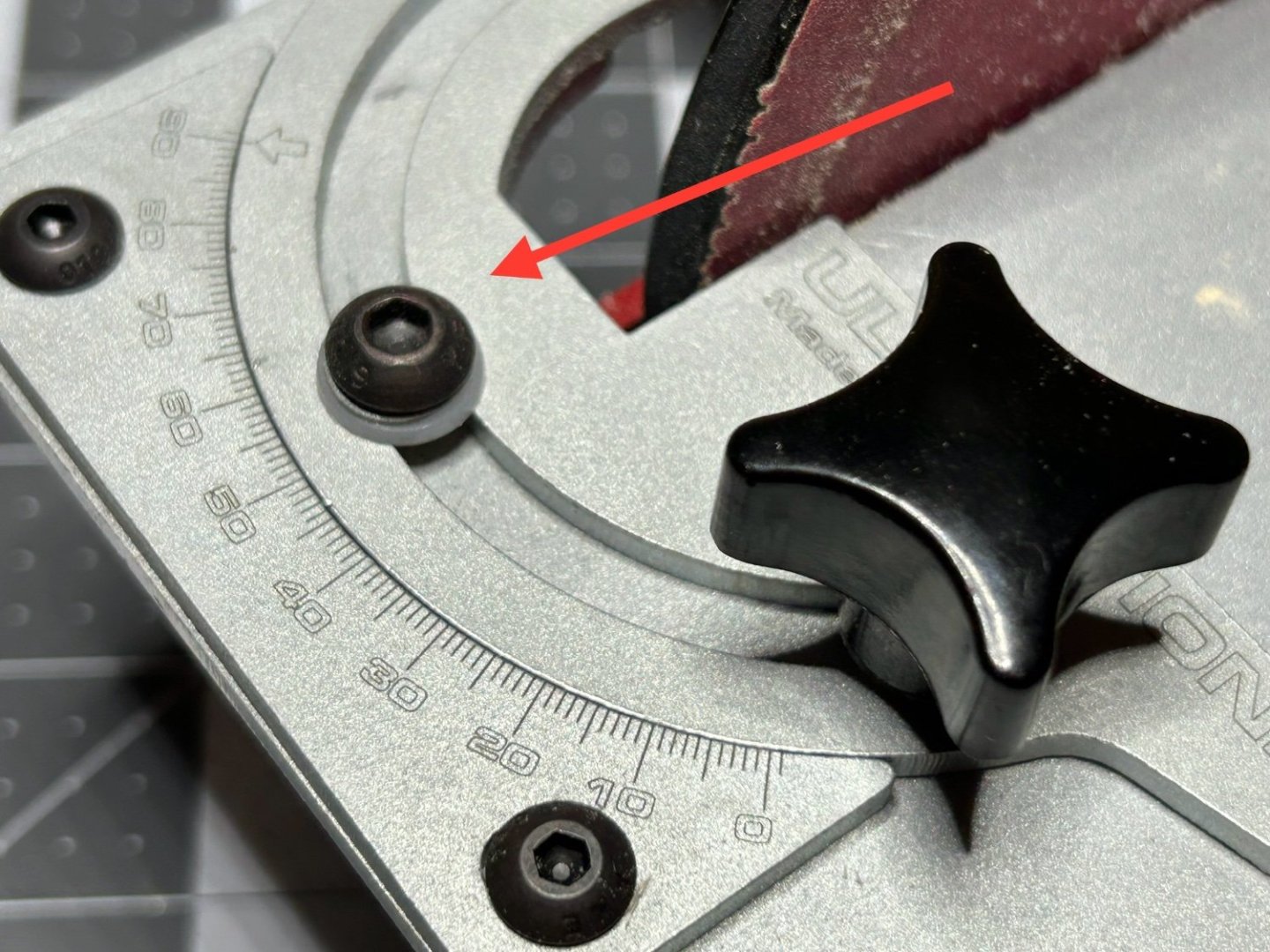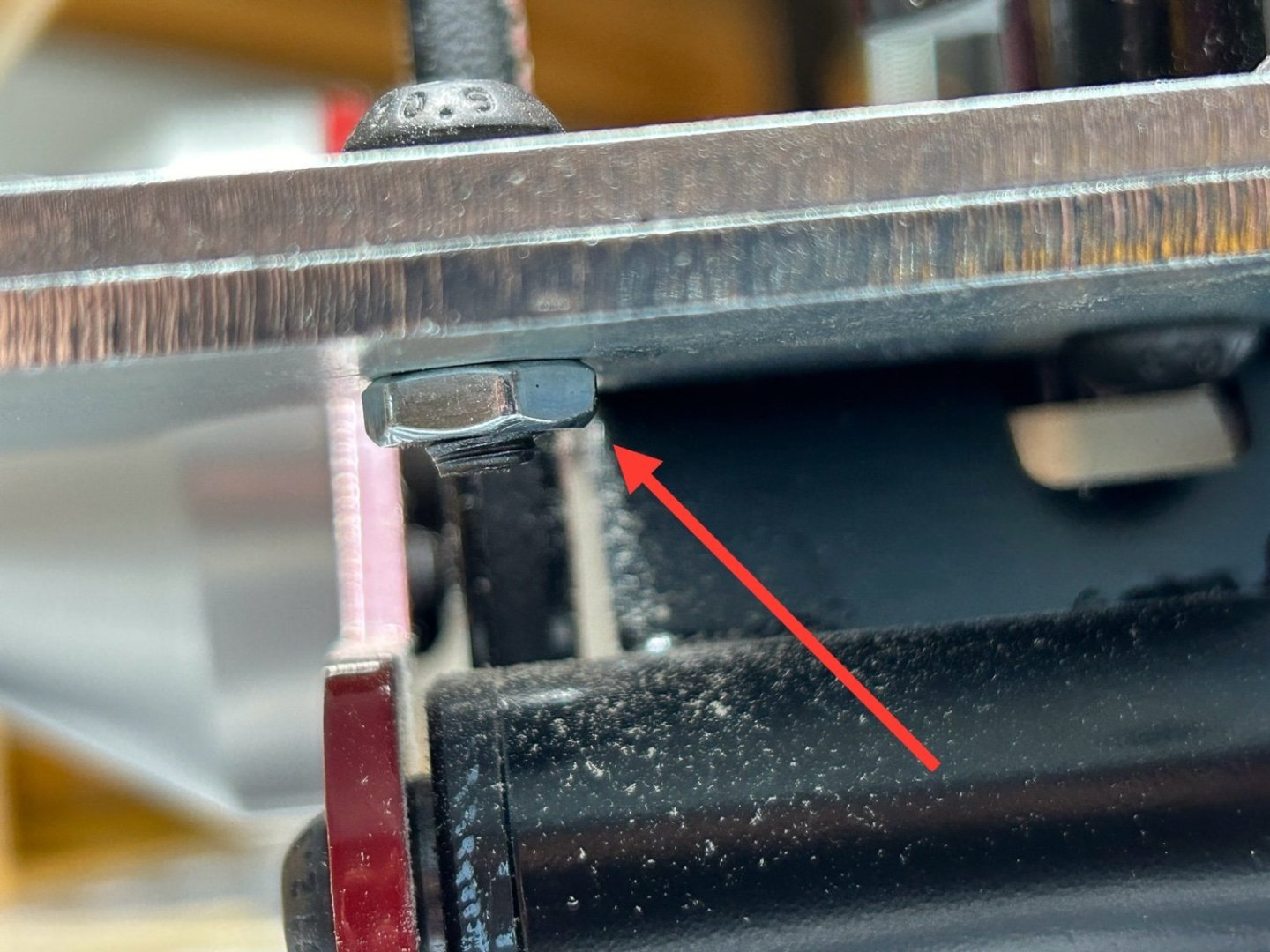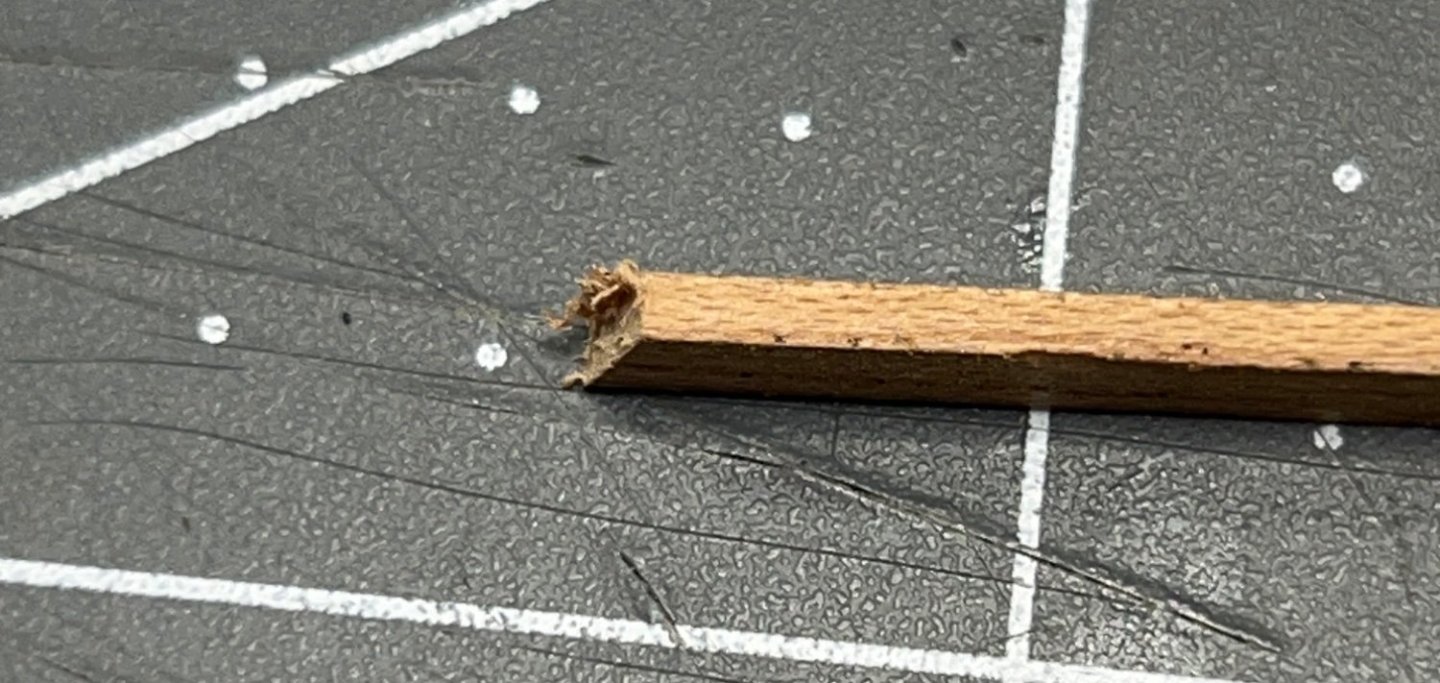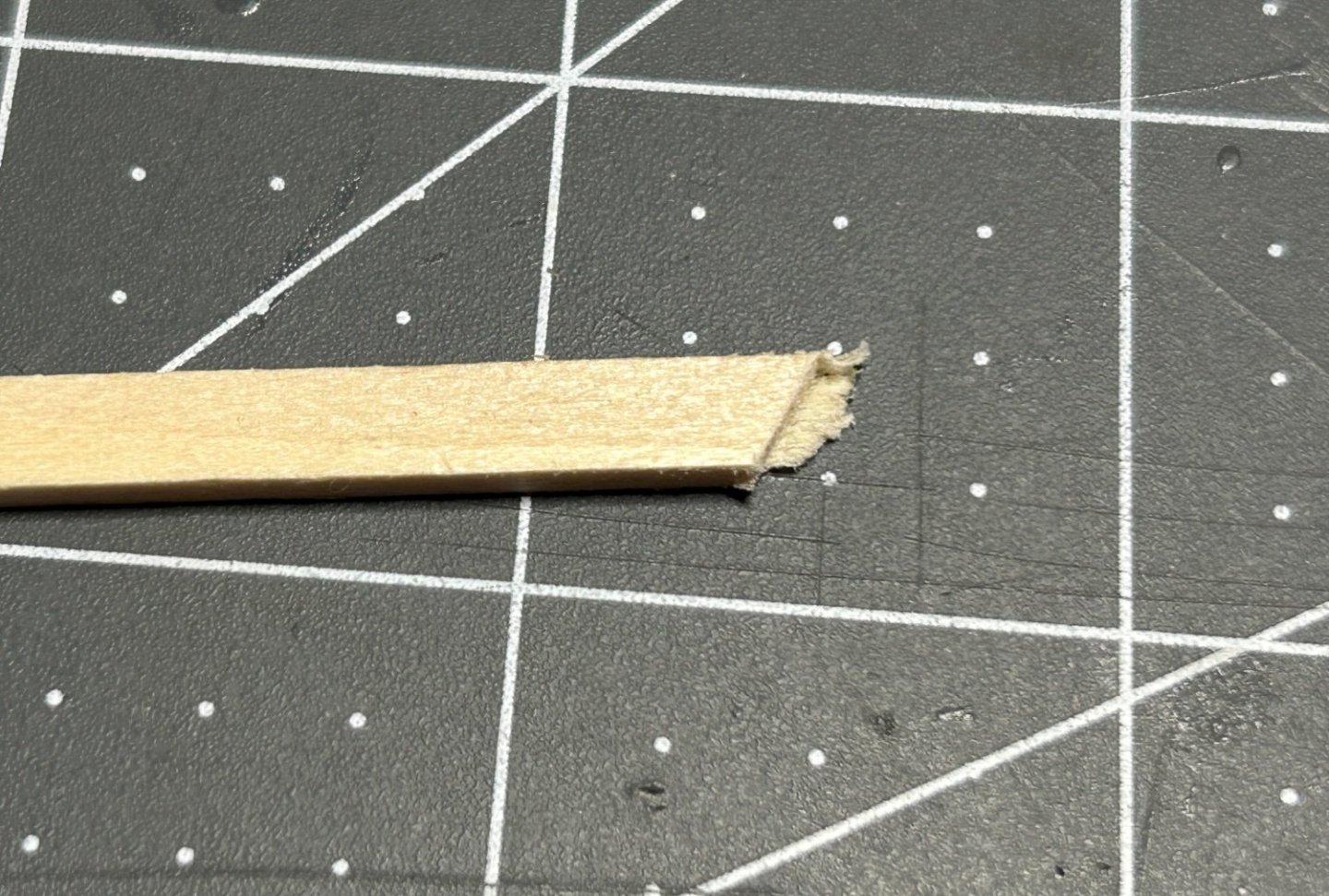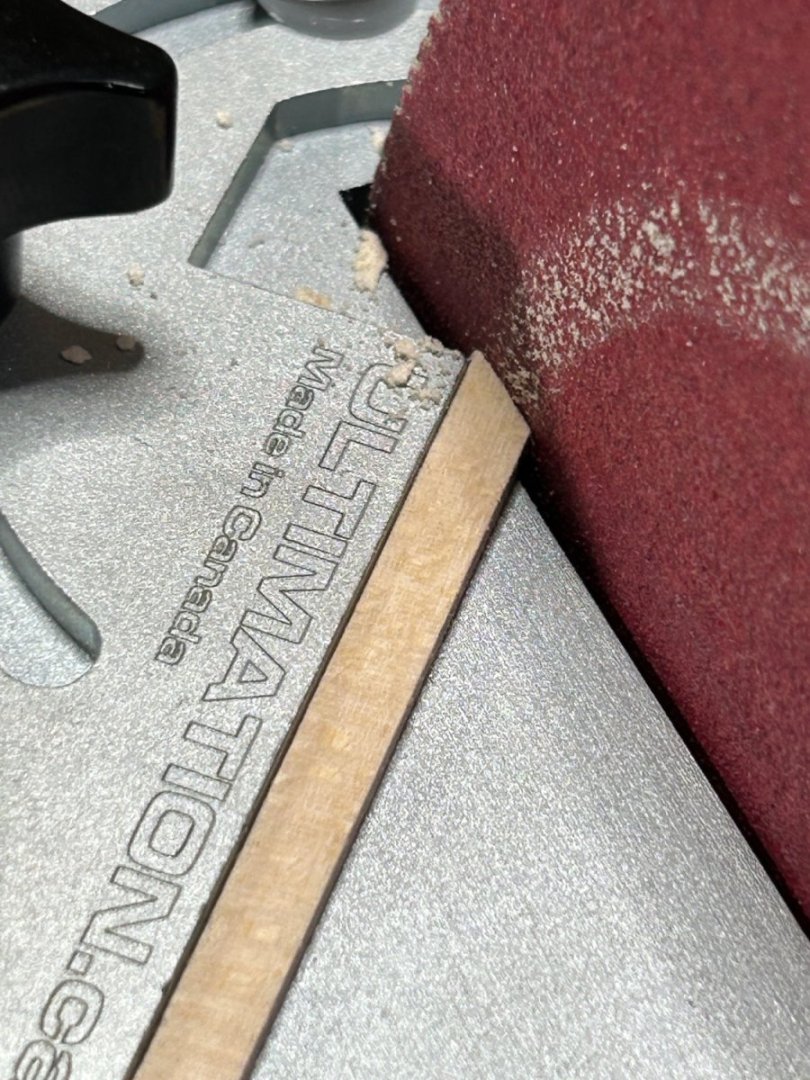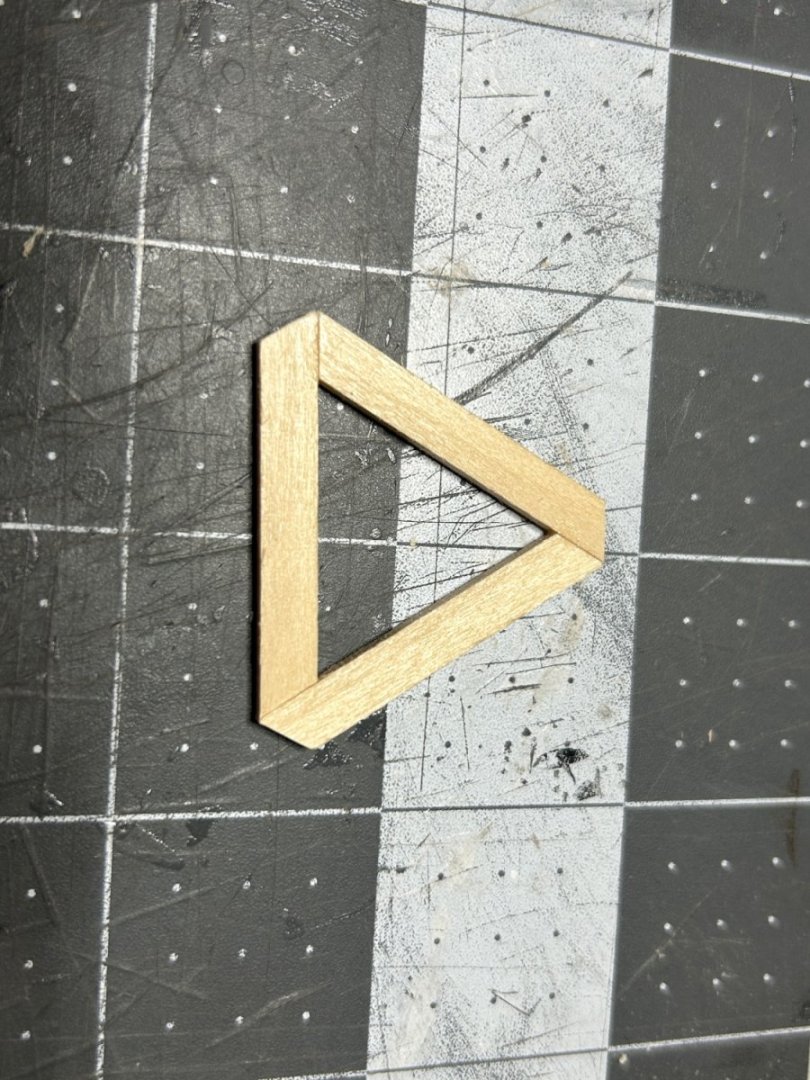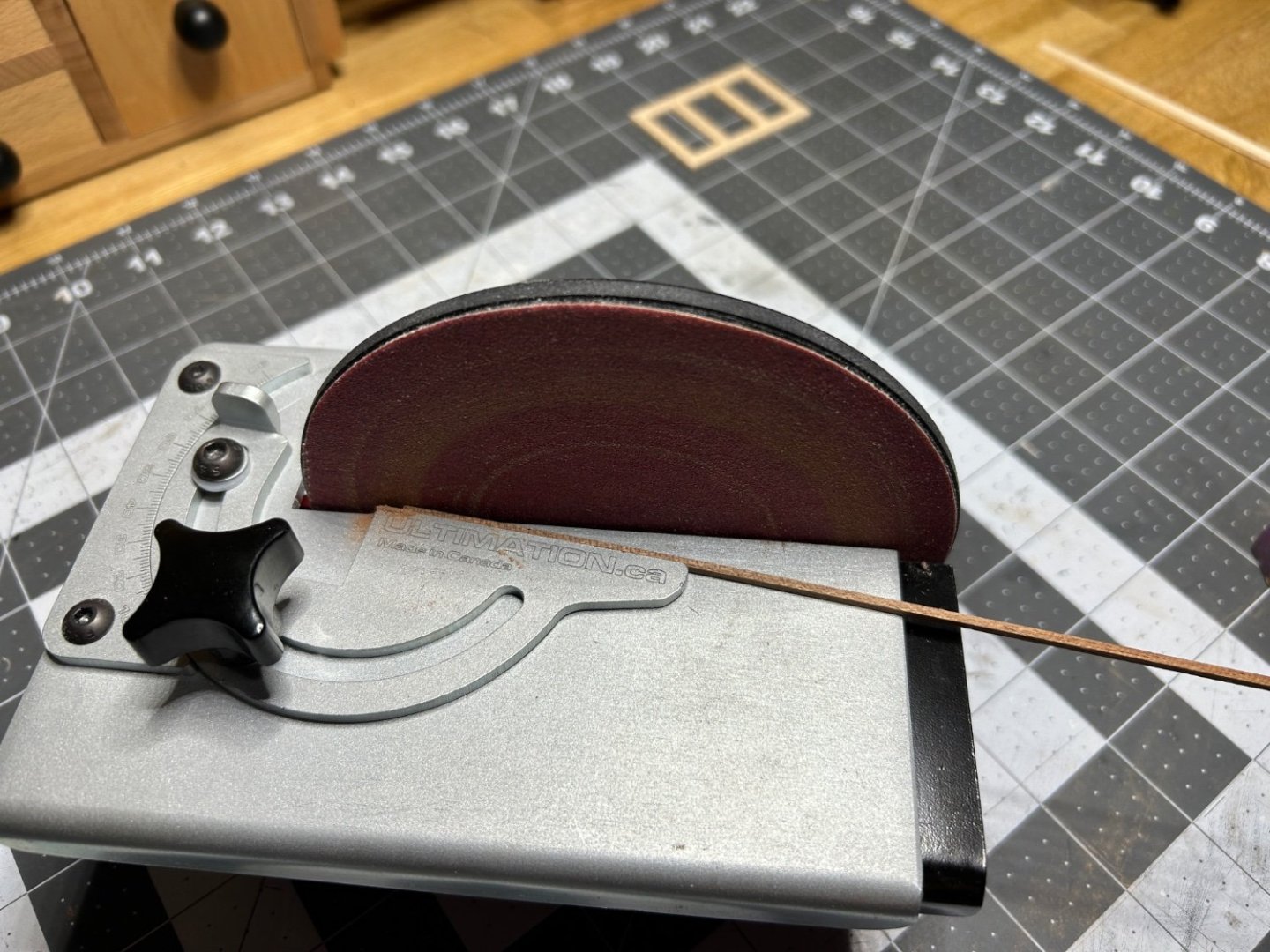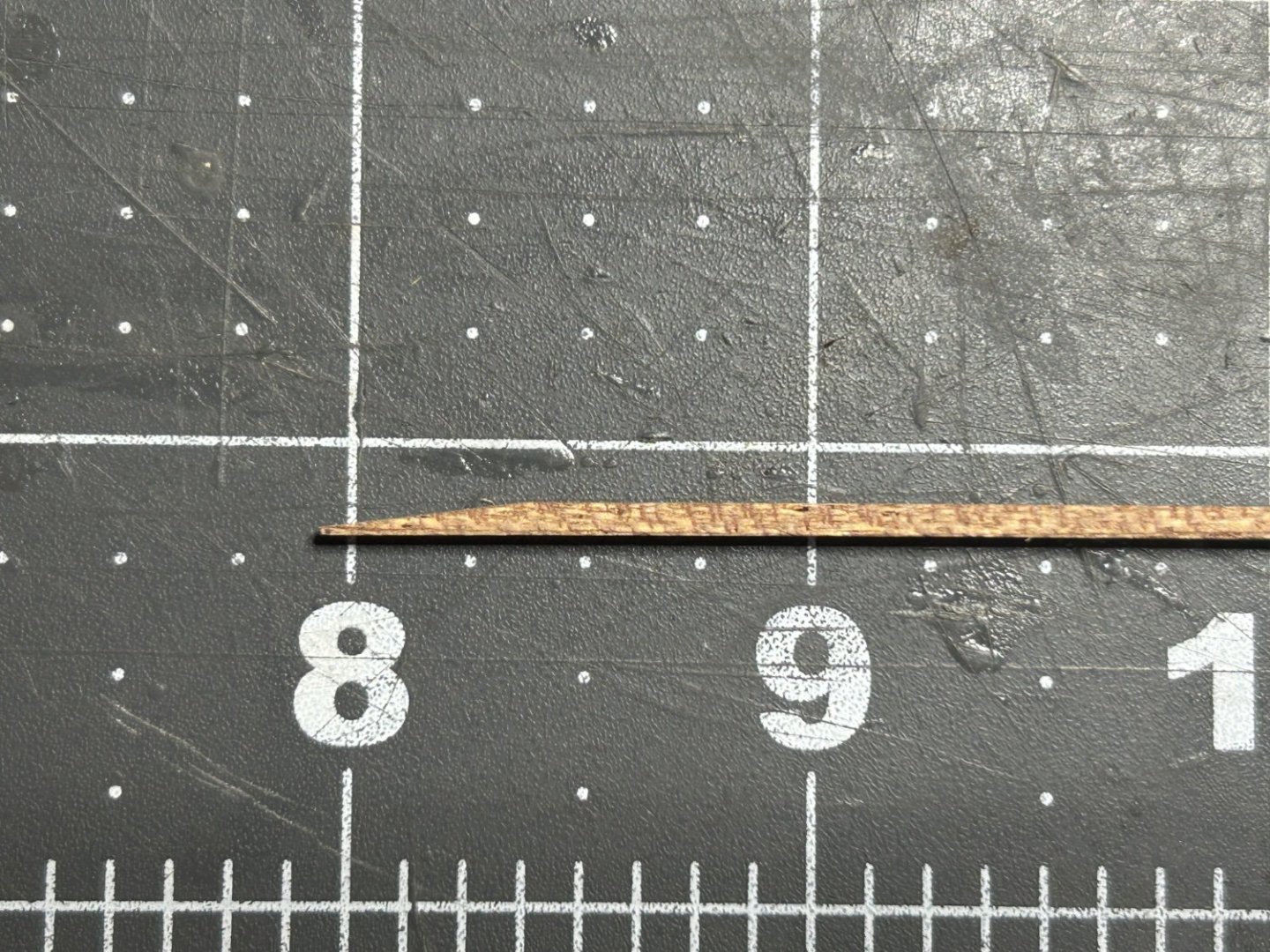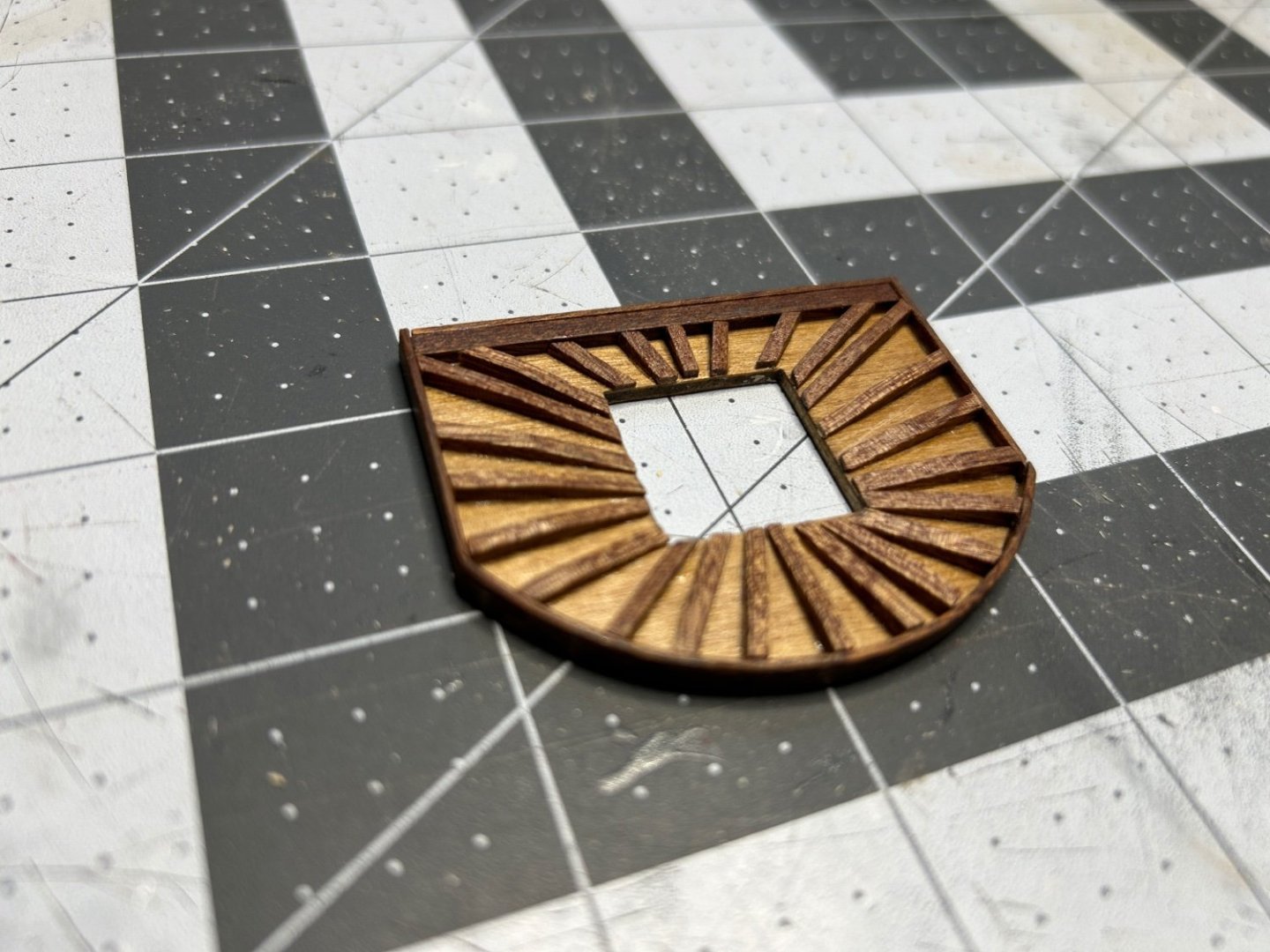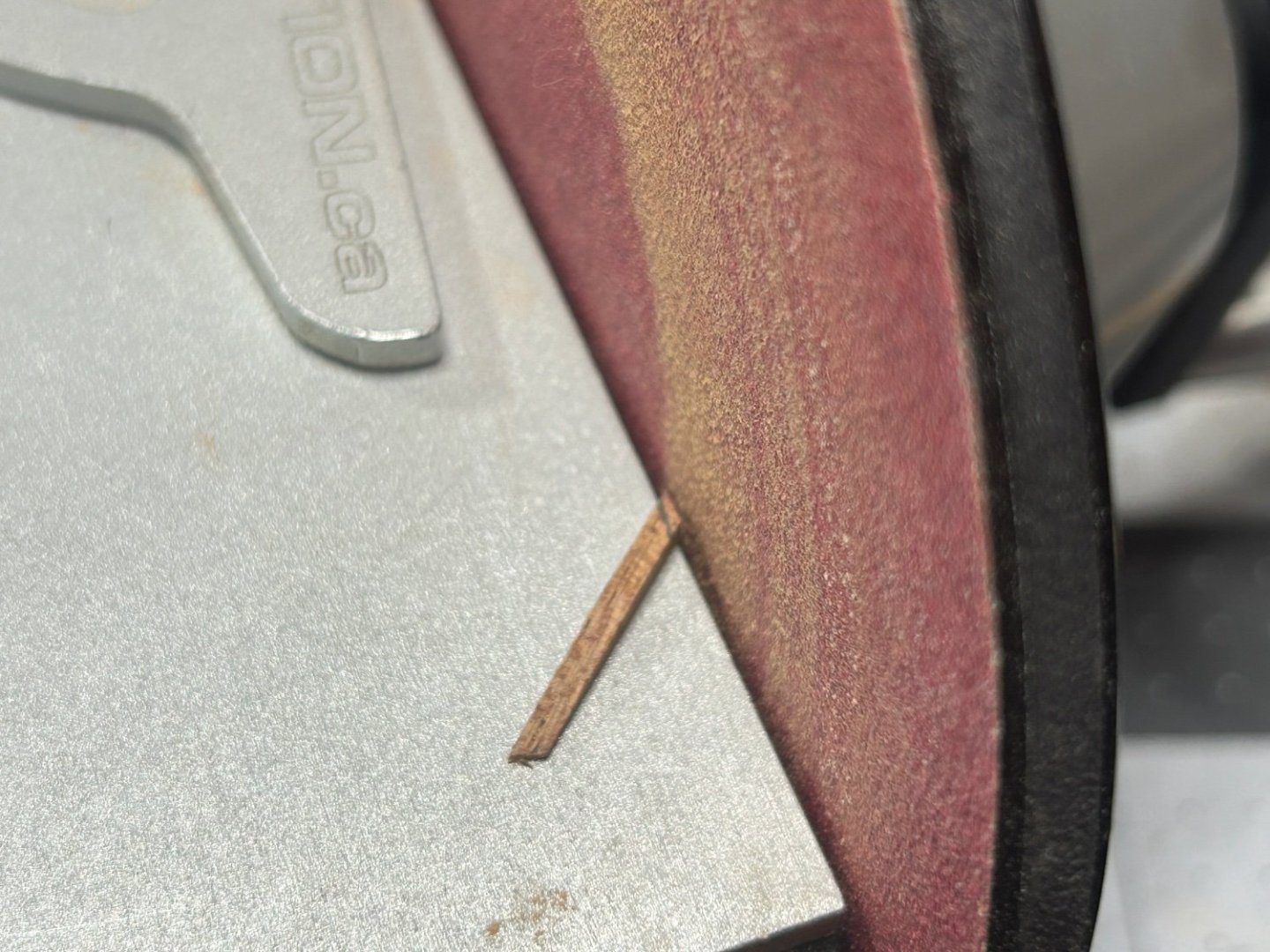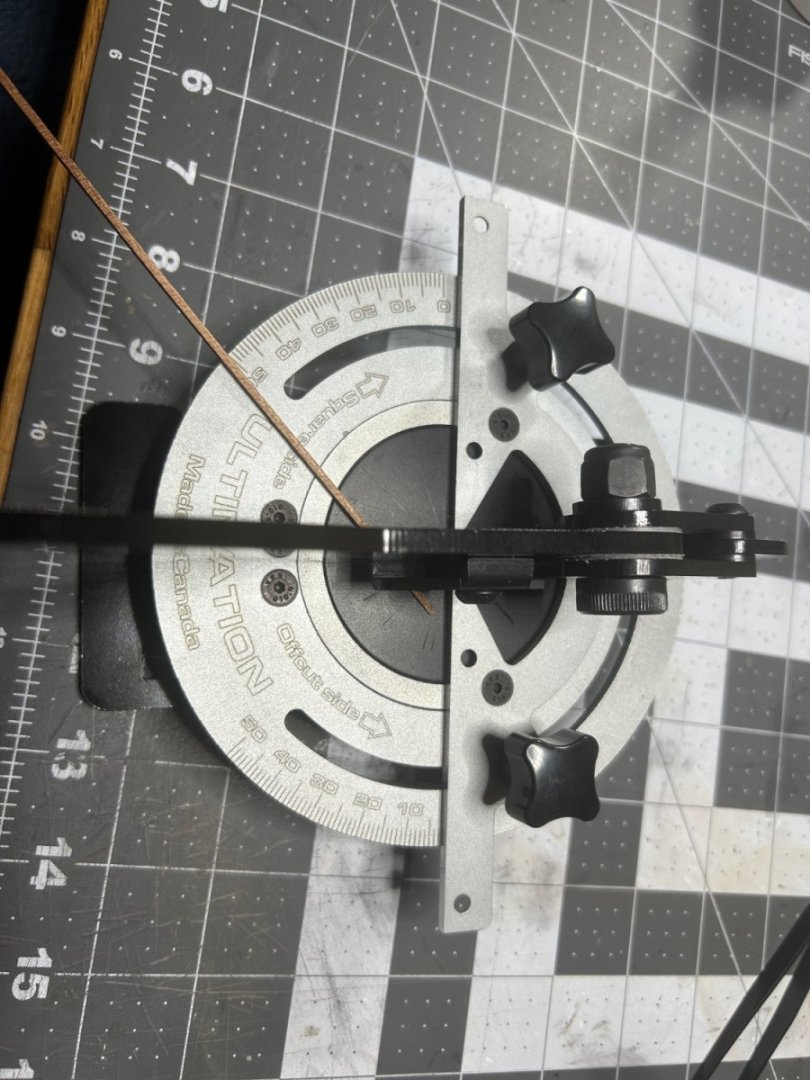-
Posts
300 -
Joined
-
Last visited
Content Type
Profiles
Forums
Gallery
Events
Everything posted by RossR
-
I have had a similar experience as Brunnels. No issue with it unwinding. I always cut it with a newer sharp blade. I keep a separate exacto knife for cutting the rope and only use it for that so it stays sharp.
- 62 replies
-
Seeing your progress makes me anxious to get started on my half hull that is sitting on the shelf. Great job.
- 23 replies
-
- half hull planking project
- half hull
-
(and 1 more)
Tagged with:
-
.thumb.jpeg.ffac2f8a24d212961a83eab4efb06a6c.jpeg)
Frigate Diana by RossR - OcCre - 1:85
RossR replied to RossR's topic in - Kit build logs for subjects built from 1751 - 1800
I now have the top mast backstays added for all three masts. These are .018 rope. I served the section at the top that wraps around the mast. I added the top gallant backstay to the fore mast, but I am a little concerned that it will make accessing the pin rails for the running rigging difficult. For the main and mizzen masts I will plan on waiting to attach the lanyard until after the running rigging is in place. If I need to I can remove the lanyards on the top gallant backstays for the fore mast and re-attach later if it helps adding the running rigging. see below fore my concern on the access to the pin rails. -
Can’t wait to see your build log for Sherbourne.
- 174 replies
-
- Perseverance
- Modellers Shipyard
-
(and 1 more)
Tagged with:
-
Did you drill the hole for the bowsprit. You will need to drill through the planking. I attached a couple pics from the instruction where you can see the hole. Not great pics of this in the instructions. If I remember, there is a gap between two filler pieces on either side of the bulkhead former that you will drill into.
-
.thumb.jpeg.ffac2f8a24d212961a83eab4efb06a6c.jpeg)
Are you an NRG Member???
RossR replied to Chuck's topic in How to use the MSW forum - **NO MODELING CONTENT**
I really appreciate that we, as users of this web site are not monetized the way most for profit (and even some not for profit) website would do. Since Model Ship World is sponsored by the NRG, keeping these organizations financially secure is important to me. That is one of my primary reasons I for joined the NRG. The magazine does have features on 20th century subjects, but I will let others chime in regarding yachts specifically. The magazine is very well done and the print version is of a quality you don’t see very often these days in our digital world. Sometimes it is still nice to read something that isn’t on a screen. -
.thumb.jpeg.ffac2f8a24d212961a83eab4efb06a6c.jpeg)
Frigate Diana by RossR - OcCre - 1:85
RossR replied to RossR's topic in - Kit build logs for subjects built from 1751 - 1800
I have continued my work on the stays and made quite a bit of progress. After posting my method for making the mouse, I have to admit that I am surprised that nobody asked why I used square stock instead of a round dowel to make the mouse? I have no idea why I used square stock. I keep all my little scraps of wood and I guess I grabbed the first thing I saw that would work. I did switch to using a round dowel when it occurred to me that I was making a little more work for myself. As I started making the stays higher up the masts and the lines got smaller, I struggled with splicing the line to create the loop. At .018 inch diameter line, I really struggled. After trying and failing a few times I started to get the hang of it and in the end I am really happy with the result of the splices I used to create the eyes on the stays. I also have completed the bowsprit by adding the dolphin stryker. With all of the stays now done, the next step will be adding the backstays and starting to build the yards, boom and gaph. Thanks for all the views and likes. -
.thumb.jpeg.ffac2f8a24d212961a83eab4efb06a6c.jpeg)
Frigate Diana by RossR - OcCre - 1:85
RossR replied to RossR's topic in - Kit build logs for subjects built from 1751 - 1800
I have made some progress on the stays. I have to thank Thukydides for sharing his techniques. Both for the mouse and for splicing the lines to create the loop. I started with the fore stay and main stay. Both of these are made from .044 inch line. This line has four strands and being a little thicker made the splicing a little easier than I experienced with some of my earlier attempts. I start by serving about 1/2 inch of the line. It is hard to see the serving in the photo, but it is the section between the arrows. I then cut the line about an inch from the end of the serving and separate the strands on that section. I then create a small loop and start to pass the four strands through the line below the loop. I try to pass each strand through the line 2 -4 times staggering how far down the line each strand goes. I hope to get a smooth taper after the line is served below the loop. I am creating a false splice and it will not hold under tension on its own. I tie a loop of thin thread around the splice below the loop to secure it. I then serve the line from the loop down to just below the spot that the mouse will go. I add some diluted varnish to help hold the bend in the loop. Next is fabricating the mouse. I start with a 4mm x 4mm peice of wood. I drill a small hole just big enough for the served line to fit through with as snug of a fit as possible. I used a 1.2 mm drill bit for the .044 line and a 1mm bit for the .030 line. After using a knife to create a very rough shape, I put the wood into a drill and use sand paper and a file to round the mouse and refined the shape. After sliding the mouse on the line I add a few half hitches with a thread above the mouse to be sure it doesn't slide up the the line by accident. Thukydides then coated his mouse with a thin fabric to give it a more realistic texture. Since I have trouble seeing the serving at this scale sometimes, I decided to just paint the mouse. I have fore stay, main stay, fore preventer stay and main preventer stay added. I am a little confused as to which is the preventer stay. I am assuming the preventer stay is the one on top. I have that wrong I apologize. The main and fore stay are made from .044 inch line and the preventer stays are from .030 line. I do not think that my results are as good as Thukydides and I would encourage you to check out posts 334 and 434 from his HM Cutter Alert build log. I will be adding the other stays over the next week or two. I also added the gun port hatches. The kit supplied metal frames and hatches. I briefly considered trying to build my own, but I choose to move forward with the kit supplied items. I did choose to paint them. The small size and detail needed pushed my eyesight to its limit. I ended up using a 3x magnifier on my work light. After getting through the ratlines I am really enjoying the rigging process again. Looking forward to starting on the yards. -
.thumb.jpeg.ffac2f8a24d212961a83eab4efb06a6c.jpeg)
Frigate Diana by RossR - OcCre - 1:85
RossR replied to RossR's topic in - Kit build logs for subjects built from 1751 - 1800
I have the bowsprit done less the dolphin stryker. I will hold off attaching that as long as possible. I am convinced I will break it off while working on another part of the ship. If anyone is interested, I thought I would share how I seize a block. There are others, such as Johan on his French Corvette, that produce unbelievable results, but I am not able to duplicate his results with my skill and maybe partially due to the scale I am building at. Here is how I am seizing the blocks. I sometimes use a helping hand device, but usually I just use self closing tweezers. I create a small loop in the line. for purposes of scale the grid on this cutting mat has 1 cm squares. In this case line is .018 mm line from Syren. I then make three loops with loops of thread and tuck one end through the loops. I am Mara thread from Gutterman. It is the 120 size, but I can't explain what those numbers mean. The sizing on thread is a mystery to me. The loop is placed of over the line that is being held in the tweezers and tightened on the line. I will add a couple of overhand knots alternating the sides on the overhand knots to ensure the knot stays tight. I will slide the knot up a little to create an opening just big enough to accommodate the block the place the block in the loop and then use a pair of tweezers to slide the knot up tight against the block. A few more alternating overhand knots to ensure tightness. Then remove the line from the self closing tweezers and create a second loop. I add a couple more overhand knots to create the loop that will go over the spar or yard or what ever you are attaching the block too. Remove the block from the tweezer and place in the item you are seizing it too. Pull both ends of the line tight and add a couple more alternating overhand knots to secure the block. Trim off the excess line and use some diluted varnish or diluted PVA to secure the knot. Use as few overhand knots as you can and still secure it tightly to avoid looking too clunky. Not sure if this is the best way to secure a block, but it works for me and I thought I would share it. -
.thumb.jpeg.ffac2f8a24d212961a83eab4efb06a6c.jpeg)
Frigate Diana by RossR - OcCre - 1:85
RossR replied to RossR's topic in - Kit build logs for subjects built from 1751 - 1800
I finally finished the mizzen mast. The assembly was simply a smaller version of the main mast without the cheeks and wooldings. I enjoy the rigging process, but I am glad to move on from shrouds and ratlines for a while. For a while I was keeping track of the number of clove hitches I tied, but I stopped at about 1800. I have also started adding the gun port hatches. I will post about them in a later post. Next up will be the bowsprit and the stays. The bowsprit is already built. I posted about that earlier. The stays will be installed using a mouse. this will be a first to me and I am looking forward to that. -
I would use the Occre YouTube videos and instructions in that case. Sanding and filler will fix any issues you have on the first layer, and second layer will go on pretty easy after that.
- 41 replies
-
This was my first model also. I had not discovered this site yet when I did my planking. I used the instructions and the Occre YouTube videos to instruct me. This is not the historically accurate way to plank a hull. If planking it in a historically accurate manor is important to you, there are many resources on the site and YouTube. Look at TLevine’s half hull project on the sight and Chuck Passaro’s YouTube videos. I will caution you that I am not convinced the very thin second layer material from Occre is suited to Chuck’s technique. My goal on that model was just to build Occre’s version of the HMS Beagle. I enjoyed myself enough to build a second ship and now I have a couple more on the shelf. My future ships will be planked using more accurate techniques. But I think I would have failed if I had attempted it on my first model. My advice is to decide what is important to you on this build, look at the material available on the site and from Occre and decide how you want to proceed based on that research. Good luck.
- 41 replies
-
I am a little late with this info, but I think bigcreekdad’s issue of straight vertical cuts may be solved with a single bevel blade. See my review of the Ultimation Slicer. It isn’t inexpensive, so some modelers will stay away. If you can justify the price it is very well made. I have seen YouTube videos of people using it on material that looks to be about 4 mm thick, but I don’t think go any bigger though. Aon’s solution works also.
-
.thumb.jpeg.ffac2f8a24d212961a83eab4efb06a6c.jpeg)
Frigate Diana by RossR - OcCre - 1:85
RossR replied to RossR's topic in - Kit build logs for subjects built from 1751 - 1800
It has been a month since my last post. Work has kept me busy so progress has been a little slow. I finally finished all of the shrouds and ratlines on the main mast. The main shrouds are .030 inch diameter ropes and the rest of the shrouds are .018 inch diameter ropes. The ratlines are .008 inch diameter rope. All of the dark ropes are from Syren. For the lanyards I used the natural lines provided by Occre. I find the futtock stave at the top of the top mast shrouds to be particularly challenging to work with. The space between the shrouds is so small that I really struggle manipulating the lines to lash the stave to the shroud and then to lash to futtock shrouds to the top mast shrouds after they wrap around the stave is equally difficult. The close up photography is not very forgiving, but from 12 - 24 inches away with the naked eye I am pretty happy with the results. Next up will be the mizzen mast, then on to the backstays and stays. -
I did the same thing on my Beagle. Definitely a weak spot were the bulwark narrows. Should be fixable, but if you want to wait a few weeks, Occre is happy to send a replacement part. They are mailed from Spain, so depending were you live it can take a few weeks. You can order the part on their website, but I would suggest fixing and not waiting.
- 41 replies
-
You are right about that. I have a collection of small pieces of various diameters of PVC pipe that’s I use as forms for bending various wood parts.
- 62 replies
-
Great idea on using the Dremel saw blade. I will definitely copy that some day.
- 62 replies
-
Last week I purchased the Ultimation Slicer and Sander with the Repeater attachment. I got a little carried away and posted a mini review on the “What Did You Receive Today” forum. I thought I would post a more complete review of the tools here. These items can be purchased individually, but I purchased them as a package deal. The Slicer is a well built tool. The base is built from 1/8 inch thick steel. The base has a black powder coated finish that should wear well over time. It is designed in a way that it can be easily clamped to a workbench and is equipped with holes to allow it to be permanently mounted to a work bench. The foot print of the Slicer is about 7 inches wide 12 inches deep without the extension for the stop installed. It weighs about 2.5 pounds. If the extension for the stop is installed, it adds about 7 inches to the width. The extension for the stop can be installed on the right or left side of the Slicer. The cutting blade is a single bevel blade that is used for carpet trimming. Ultimation provided 10 replacement blades with the slicer and they sell replacements at a very reasonable price, but shipping can be expensive. I really appreciate that they also provide the manufacturer and part number of the blade so you can source them yourself if you choose. There is also a small round cutting mat that appears to be cut from a self healing cutting mat. These can be flipped over if one side has excessive wear and two are provided. They sell replacement mats if you need them. The angle of the fence can be adjusted by loosening two knobs and then manually twisting the fence. The base has the angles marked off in 1 degree increments. The extension with the stop can be added fairly easily. You need to remove the fence from the base by removing the bolts that the two knobs are threaded on to. The stop can then be attached to the fence with two screws through the bottom of the fence. The screws are short and the hardest part is getting them started. When the fence is removed the cutter handle is lifted all the way back exposing the blade. The instructions say to put a piece of tape over the cutting edge while this is being done for safety. You definitely want to do this. These blades are very sharp. Sharper than a standard utility knife blade. When you make a cut with the Slicer you want to initially make a cut that leaves the piece slightly longer than your final length, then your Final Cut should just shave off 1 mm or so and you will get a great result. I believe you will get a better result if you position your part so your waste is on the side of the blade with the bevel. Keep that in mind when installing the stop. The cuts I am showing are in 2mm x 5mm Lime Wood that was left over from a previous build. In the short time I have used the slicer, I have not felt the need to clamp it to my work bench. I think the weight of the slicer helps keep it in place while using it. I have seen YouTube videos of people using it on wood that appears to be about 1/4 inch thick. I have not tried cutting anything that thick yet. Before I purchased the Slicer, I reached out to Ultimation about whether it could be used on thin copper for plating a hull and they sent me a link to Olha Batchvarov’s YouTube channel were you can find a video of her using it for exactly that. I am very happy with the Slicer and am looking forward to years of use from this tool. The Sander is also very well built. The base is made out of the same 1/8 inch steel. In the Sander’s case it has a red powder coat finish. The base is designed to be easily be clamped to a work bench or permanently mounted. The Sander’s foot print is about 7 inches wide and 6 inches deep. The repeater will add up to 8 inches to the depth when installed. My small kitchen scale only goes to 5 pounds and the Sander exceeded that, so I don’t know the exact weight, but it is more than 5 pounds. The spindle that the holds the sanding disk turns very smooth. The sealed bearings appear to be a very high quality. I do not own a runout gauge, but there appears to be no visible runout on the disk. There is no unwanted play in the spindle at all. The Sander is shipped without the handle installed to save space, but it is ready to go from the box other than that. The top table is made of aluminum along with the guide. The markings on the guide are in one degree increments. There are no positive stops on the sander, but given the compact size that may have been difficult to successfully engineer into the product. In my use so far I haven’t had any trouble getting the guide set to the desired angle. There is a small ledge at the opposite end of the disk from the guide that can be used as a fixed 90 degree guide for small pieces. The table is mounted to a hinged plate that can be opened reveals an adjusting knob. This allows the top table to be slid left or right about 3/4 of an inch for the purpose of allowing more even wear on the sand paper. It also allows for easily cleaning out the sawdust created during use. There is also a small set screw on the back that allows the distance between the disk and the table to be adjusted. I have not played with this feature, so I don’t know how easy it is to adjust. The guide is adjusted by simply loosening the knob on top. Ultimation recommends 120 grit automotive grade adhesive disks, and the unit ships with one already installed. They prefer the automotive grade because they say the adhesive works better and doesn’t leave residue when they are removed. Because the sanding disks are readily available, Ultimation does not resell them. They provide two manufacturers and part numbers that they say work well, so you can source them yourself. They say the disks should have a long life due to the fact that heat is one of the enemies of sandpaper and due to the low RPM’s of the hand operated disk very little heat is generated. The repeater is a device that utilizes a spring loaded pusher that can allow the Sander to consistently reproduce parts to the same length. To install the Repeater, you need to remove the locking nut under the table, then the adjusting knob and the retaining screw from the guide, then the Repeater fits into the same spot as the guide. The sander will leave a burr on the bottom of the material being sanded. I have watched YouTube videos of others using the Sander and if you briefly reverse the direction of the disk this burr is mostly removed. I found It easier the use a sharp hobby knife to remove the material. The amount of material left seems less with harder woods. Here is a small example of three pieces made with the repeater. They came out uniform in size and with consistent angles. On my current build I have started the rigging, so not a lot of work left that requires these tools. I did have the mizzen top left to build and I used Ultimation tools for the braces on the top surface of the top. I apologize, if braces is not the correct term for these features. I used the Sander to add the bevel to a 2mm x 2mm piece of Sapelli. I set the guide to 7 degrees. The end of the piece eventually was thin enough to fit between the disk and the table so I went very slowly. I then used the Slicer and Sander to get the angles right at each end of the piece. I freehand this step after marking the ends from the plans. These tools, especially the sander made this task far easier than the tools I used for the first two tops on my model. I am thrilled with the results. These tools are expensive. I purchased a bundle to get a better price on the three items. They can be purchased separately if you choose to. I know a lot of modelers won’t have the money to invest in these tools, and another member said the shipping to Europe is cost prohibitive. If you can afford it I would definitely suggest considering a purchase of these tools. Right now if I had to choose one of them, I would choose the Sander. Especially with the repeater, I find this tool more versatile. I can’t wait to use them more on future projects.
About us
Modelshipworld - Advancing Ship Modeling through Research
SSL Secured
Your security is important for us so this Website is SSL-Secured
NRG Mailing Address
Nautical Research Guild
237 South Lincoln Street
Westmont IL, 60559-1917
Model Ship World ® and the MSW logo are Registered Trademarks, and belong to the Nautical Research Guild (United States Patent and Trademark Office: No. 6,929,264 & No. 6,929,274, registered Dec. 20, 2022)
Helpful Links
About the NRG
If you enjoy building ship models that are historically accurate as well as beautiful, then The Nautical Research Guild (NRG) is just right for you.
The Guild is a non-profit educational organization whose mission is to “Advance Ship Modeling Through Research”. We provide support to our members in their efforts to raise the quality of their model ships.
The Nautical Research Guild has published our world-renowned quarterly magazine, The Nautical Research Journal, since 1955. The pages of the Journal are full of articles by accomplished ship modelers who show you how they create those exquisite details on their models, and by maritime historians who show you the correct details to build. The Journal is available in both print and digital editions. Go to the NRG web site (www.thenrg.org) to download a complimentary digital copy of the Journal. The NRG also publishes plan sets, books and compilations of back issues of the Journal and the former Ships in Scale and Model Ship Builder magazines.

